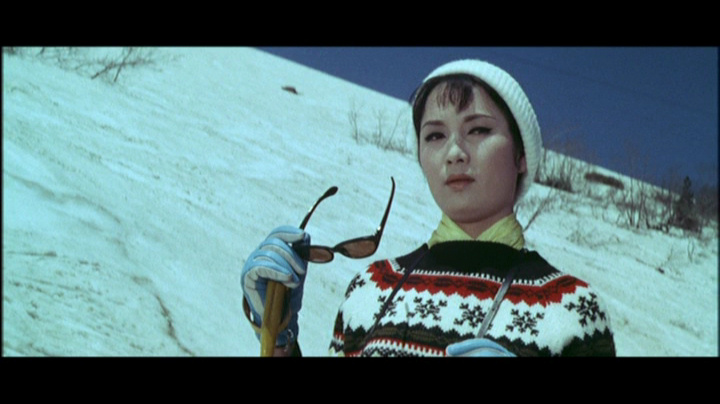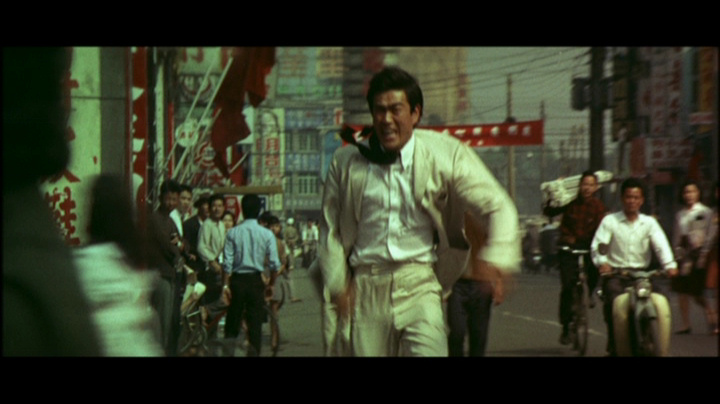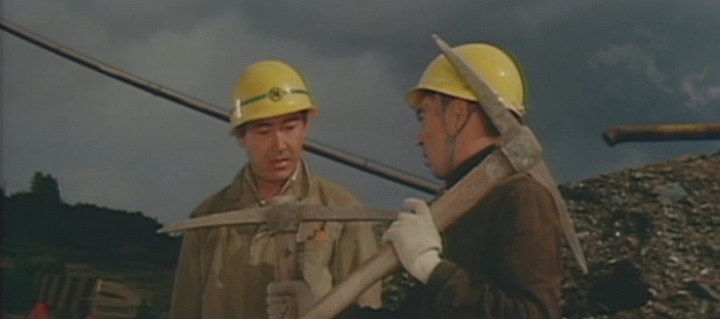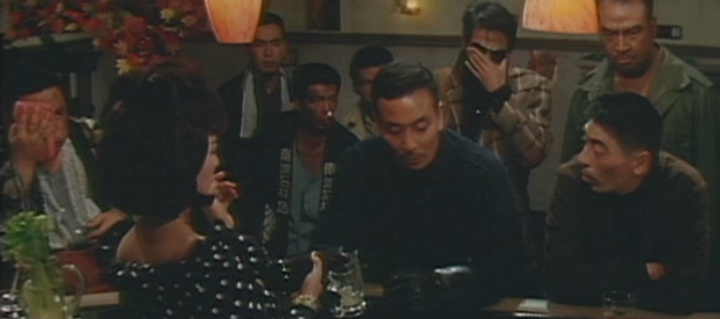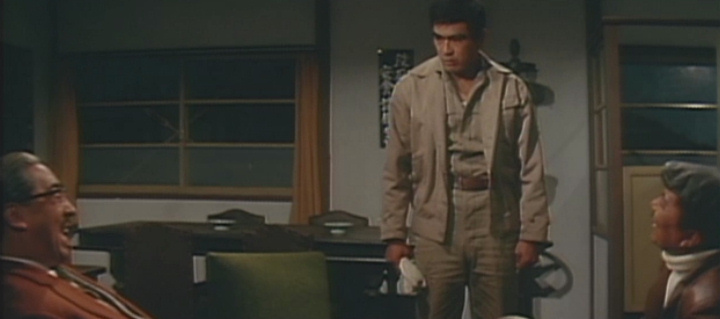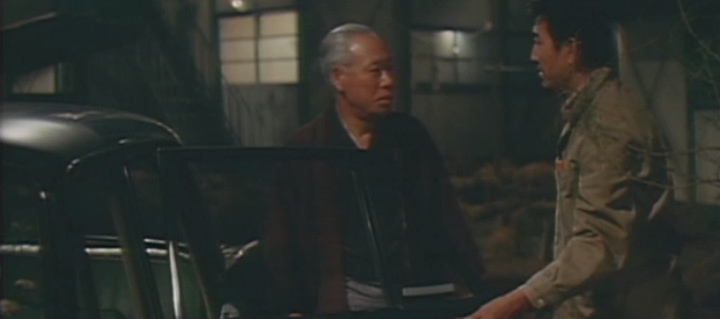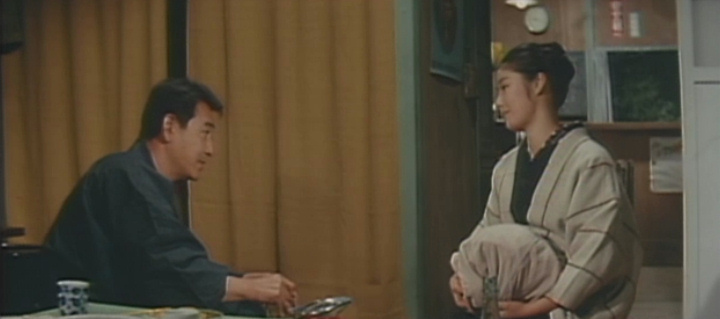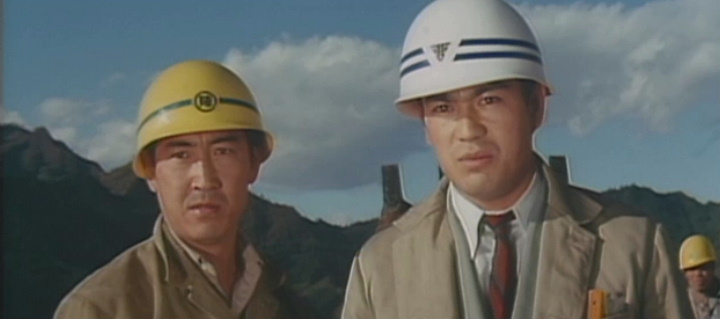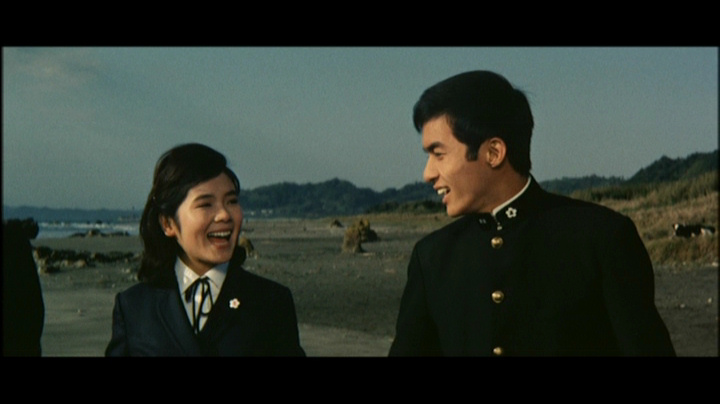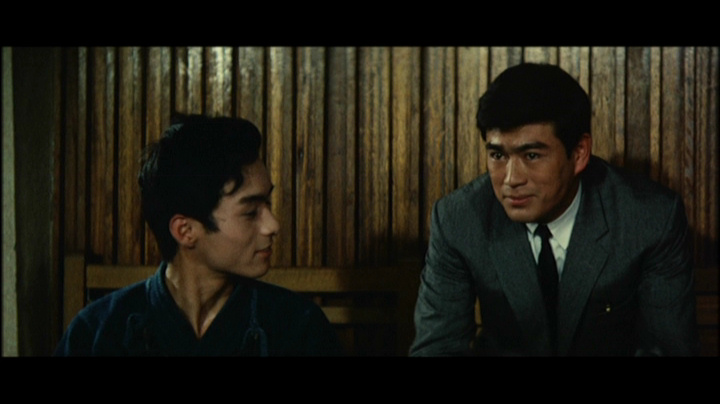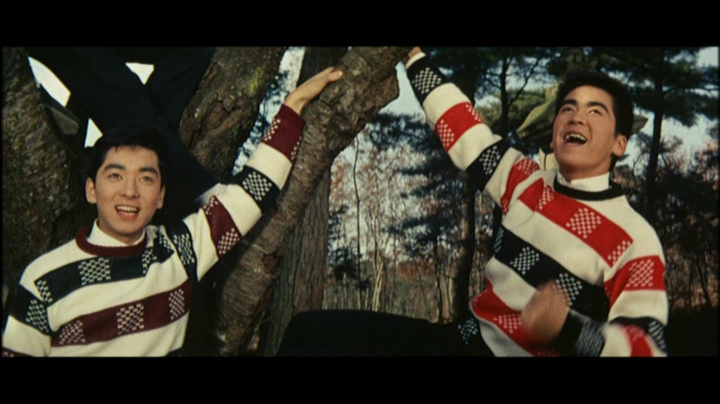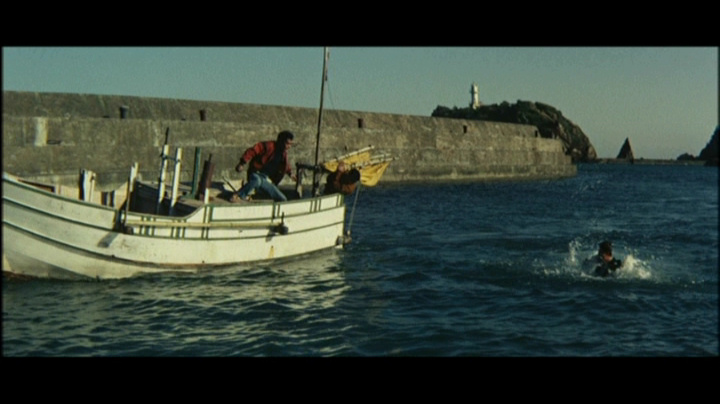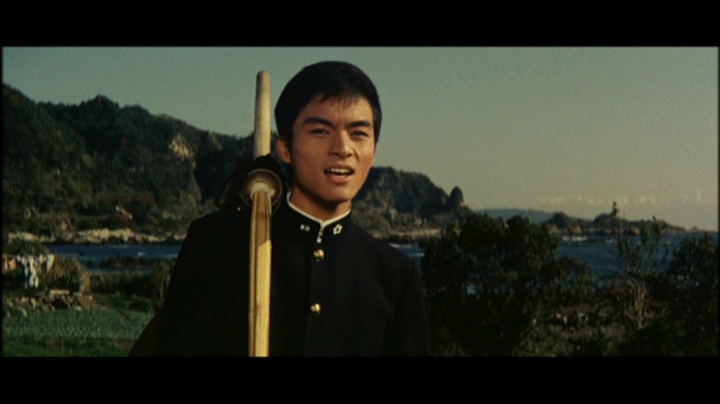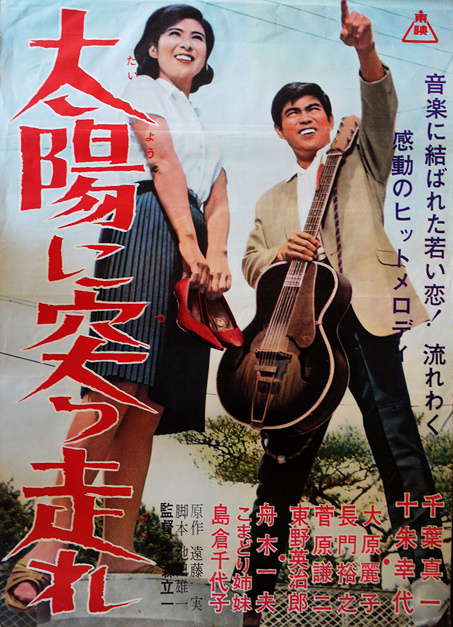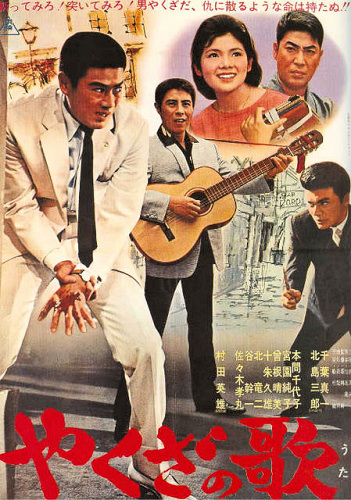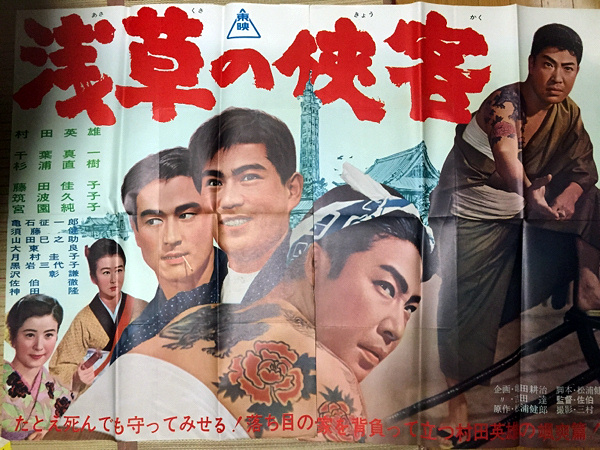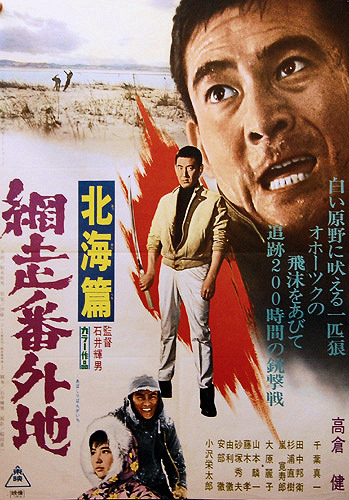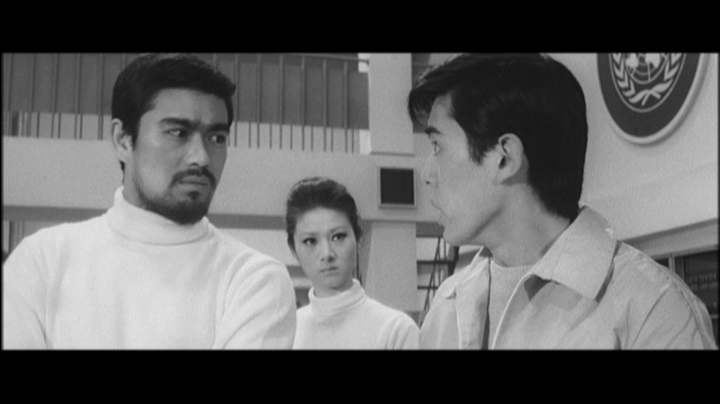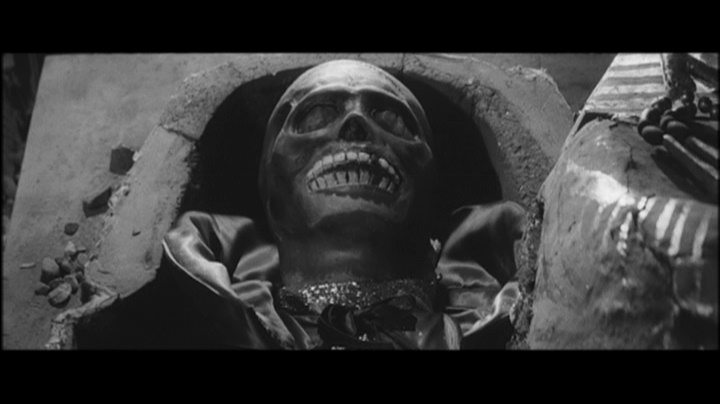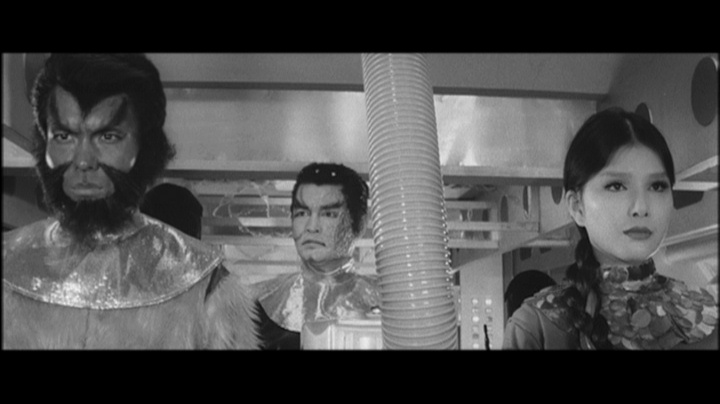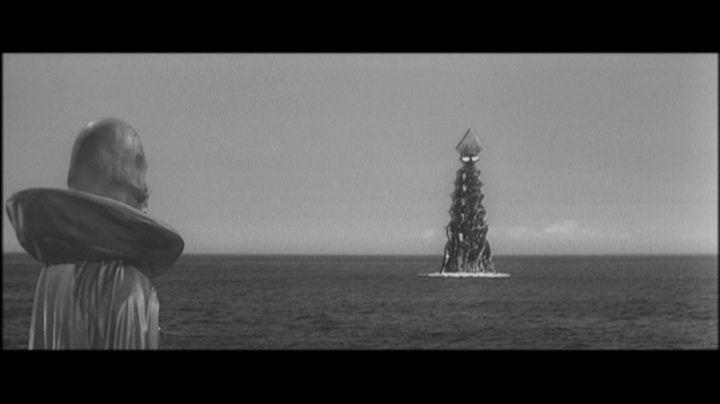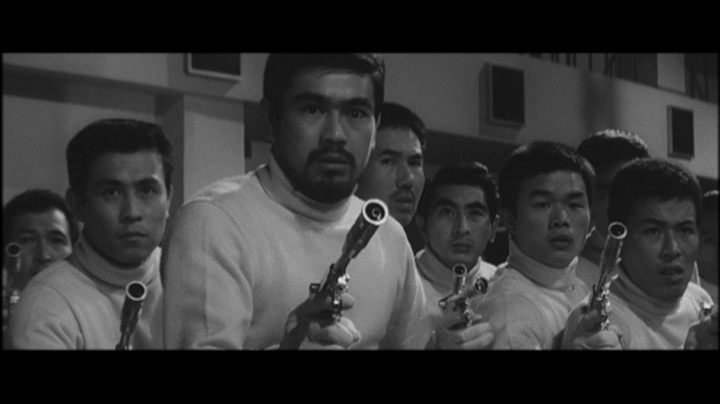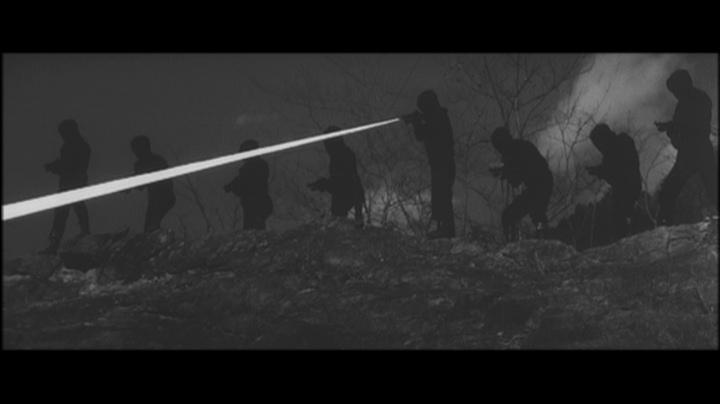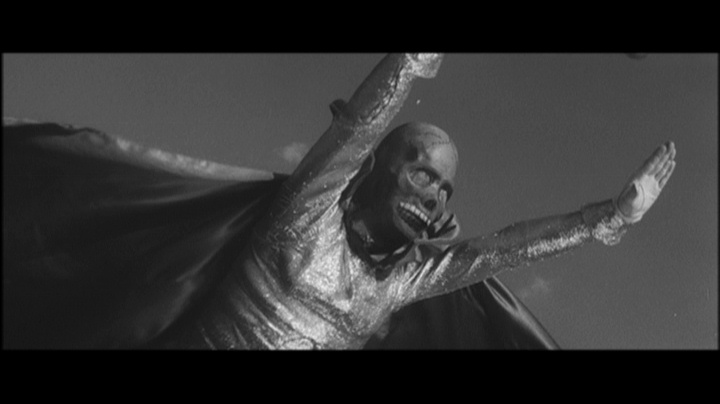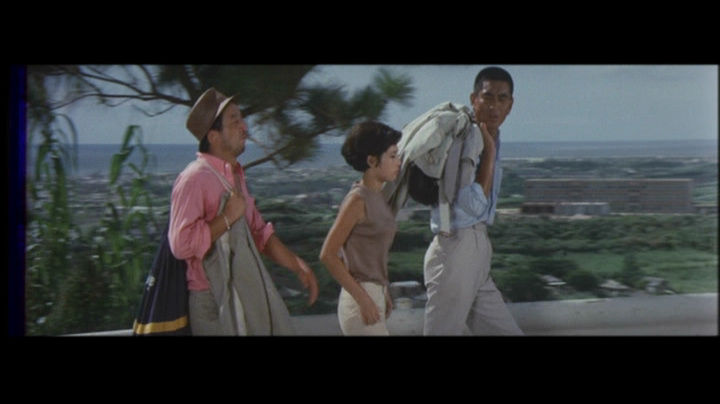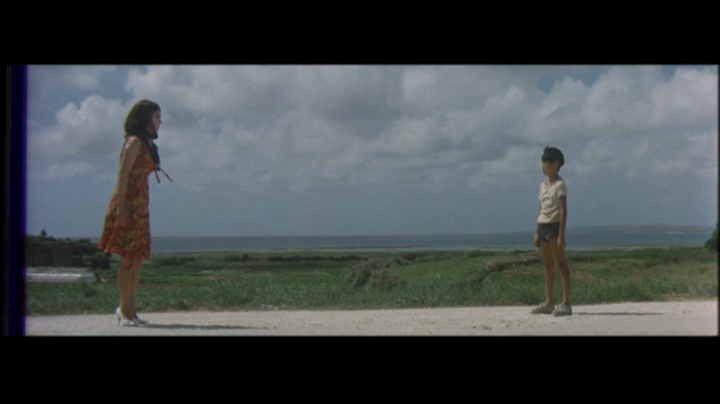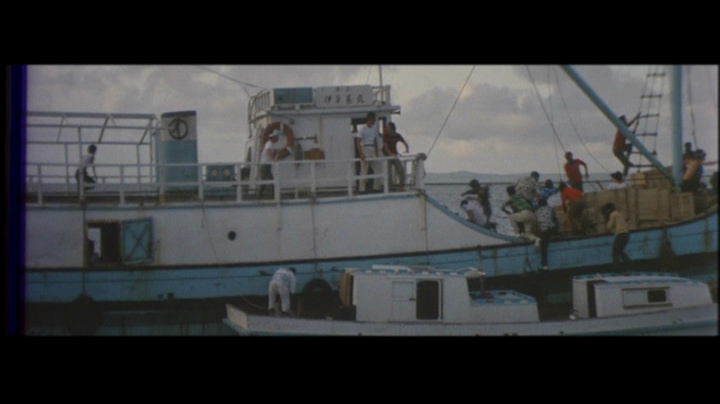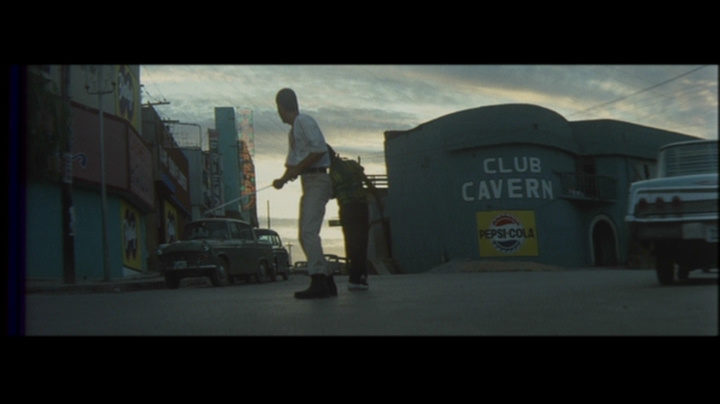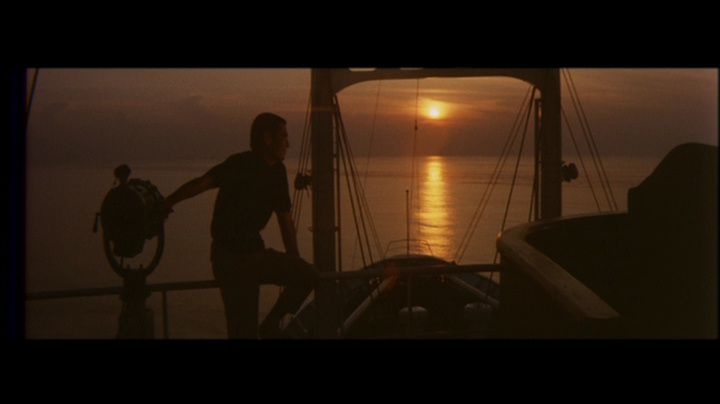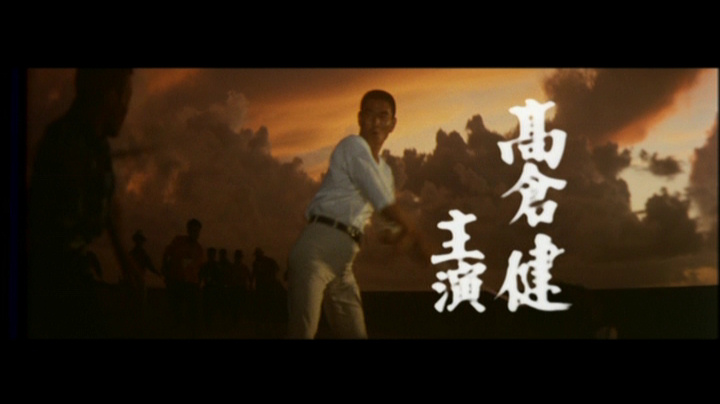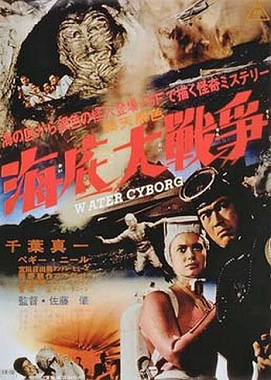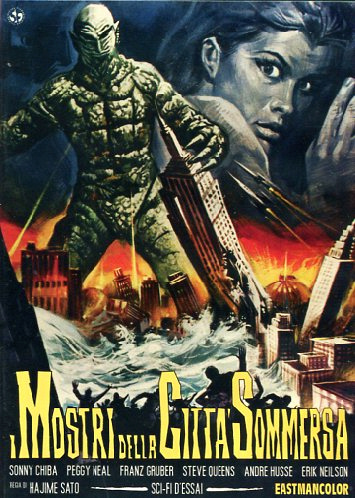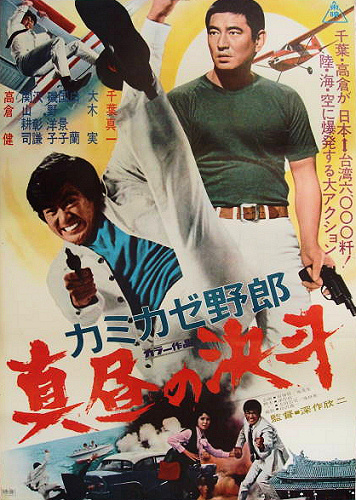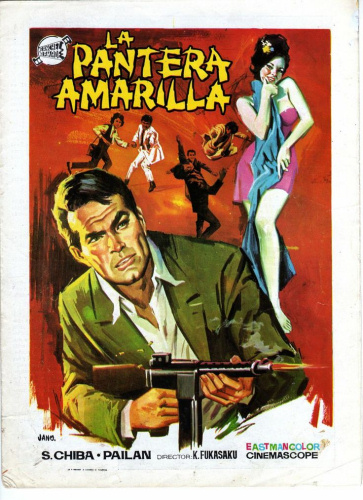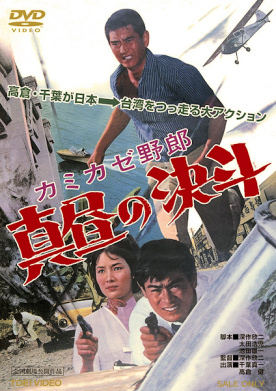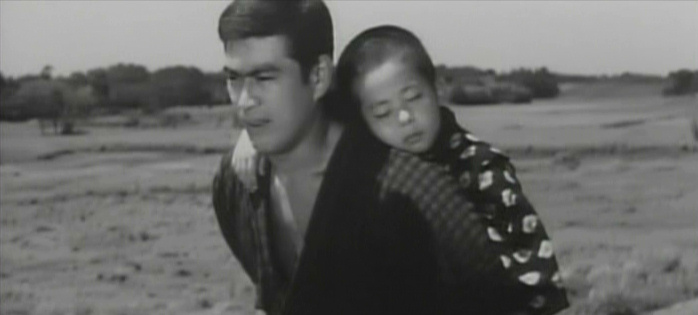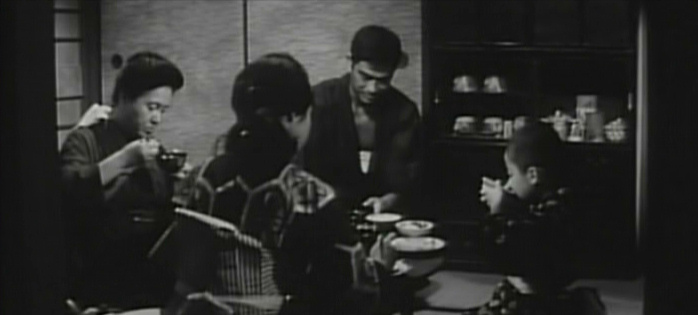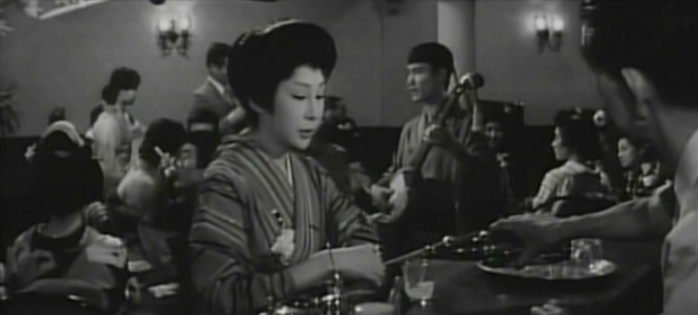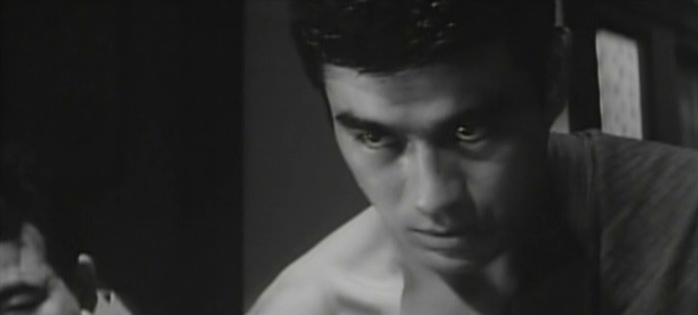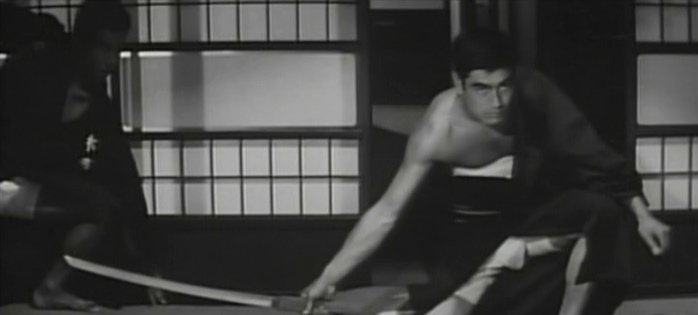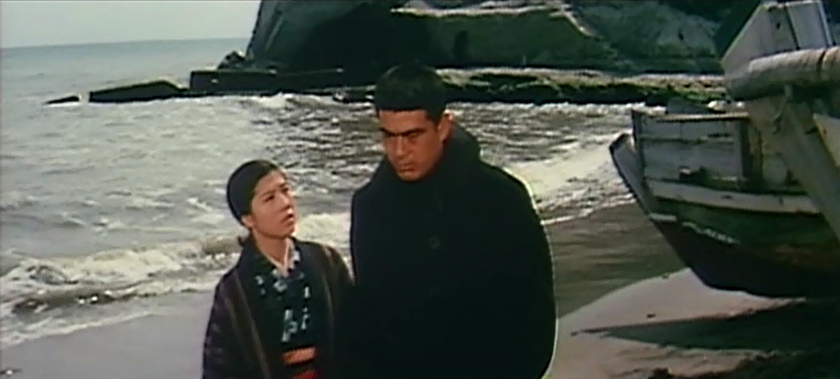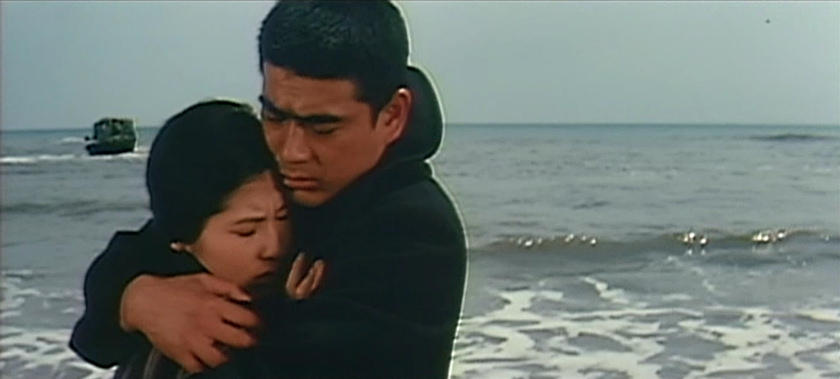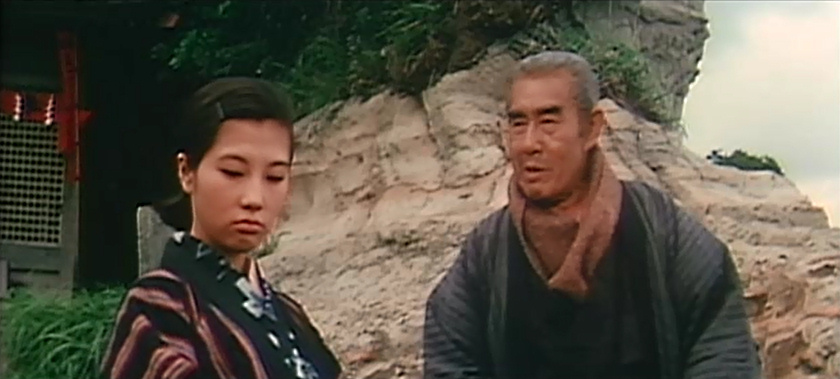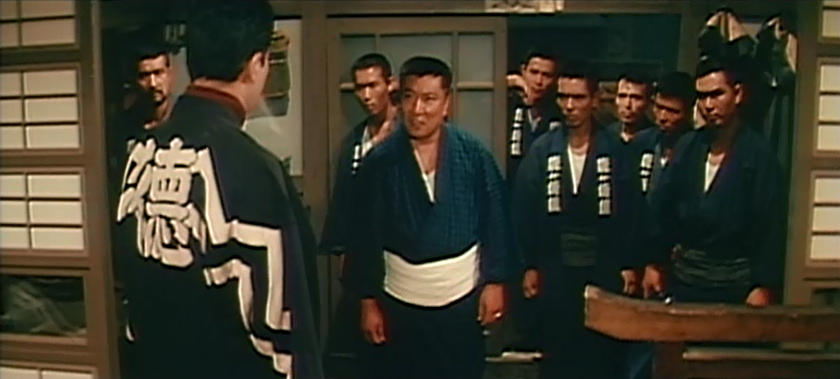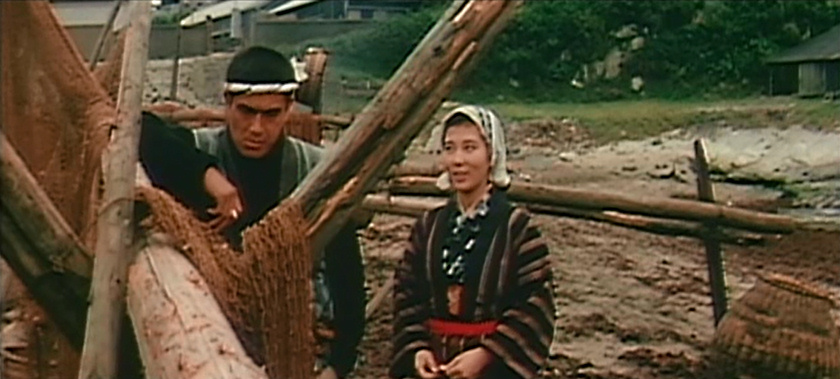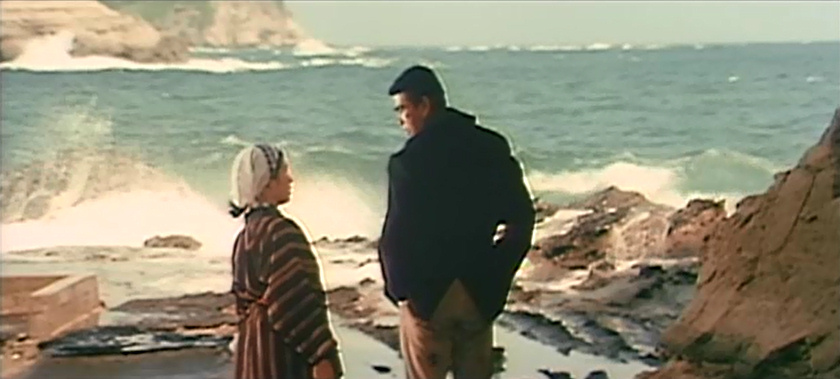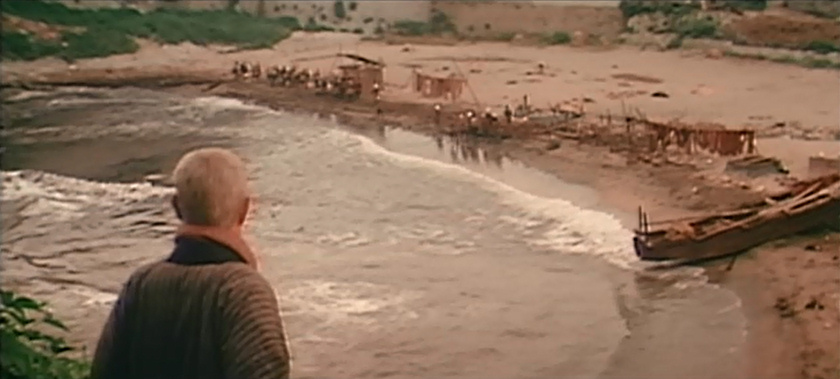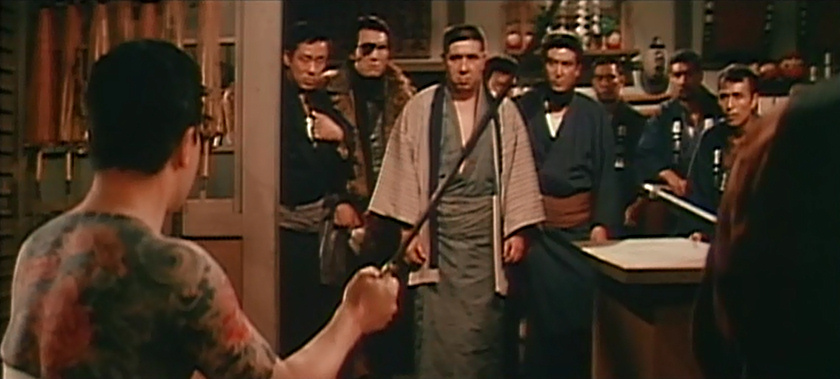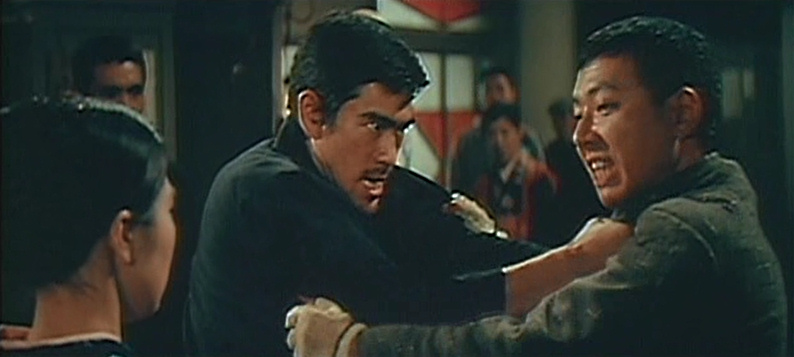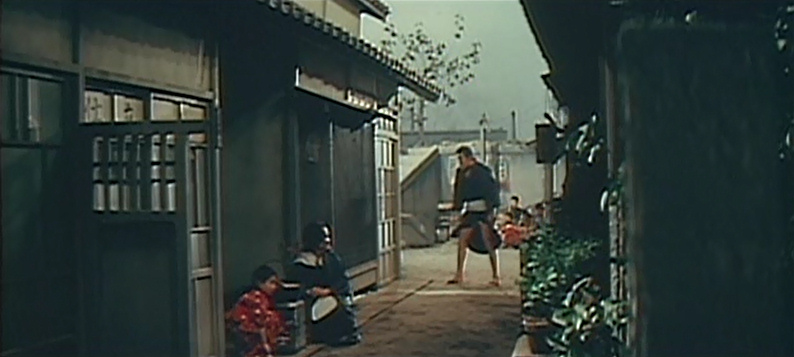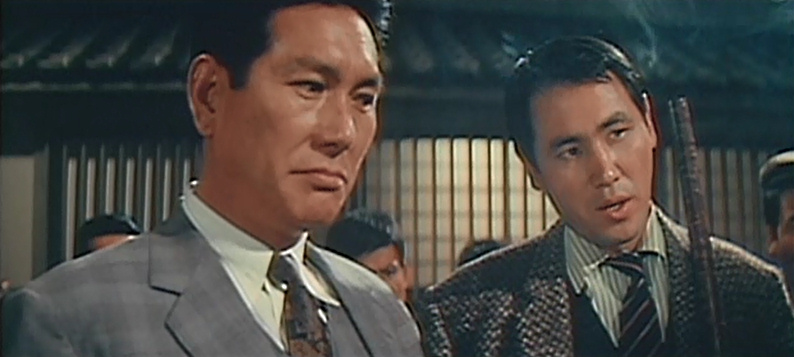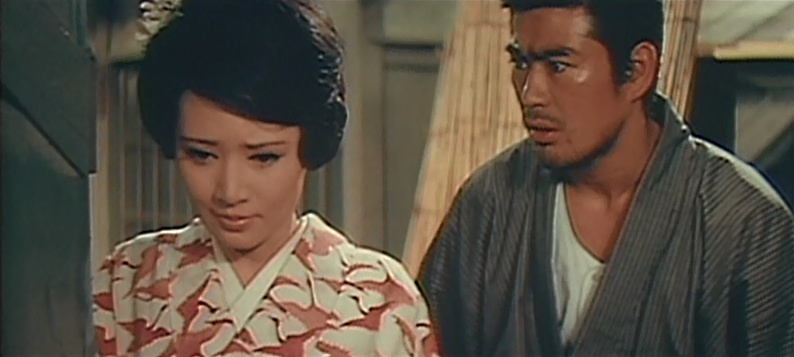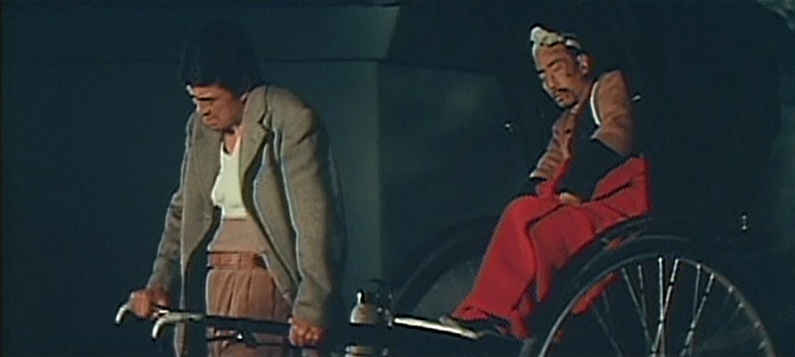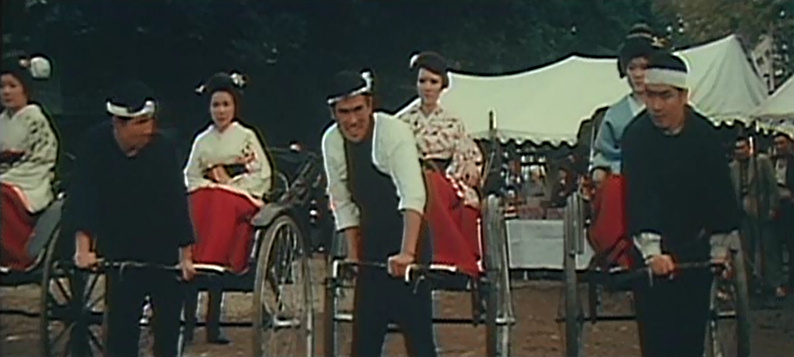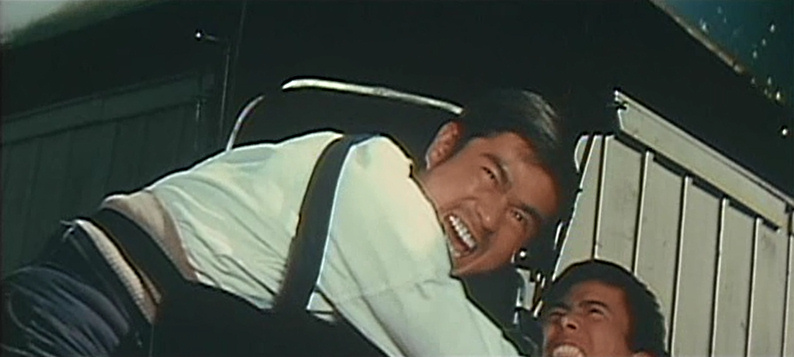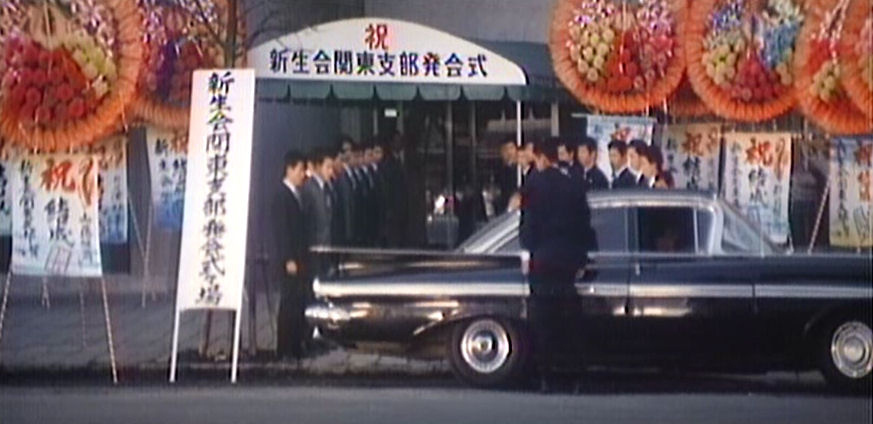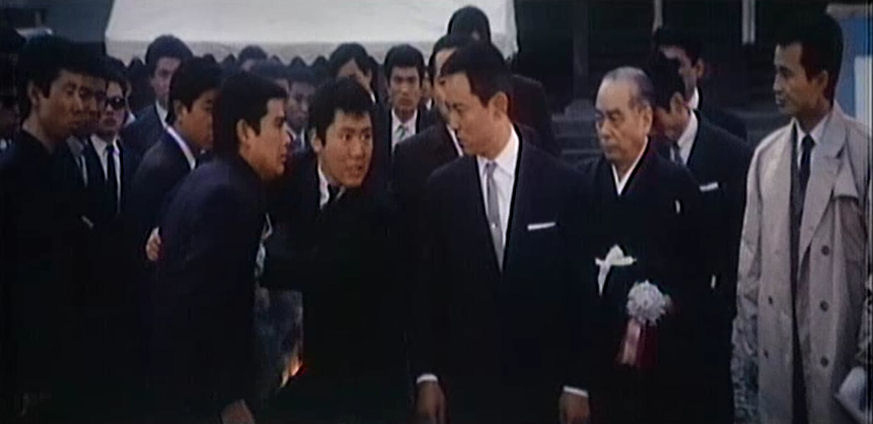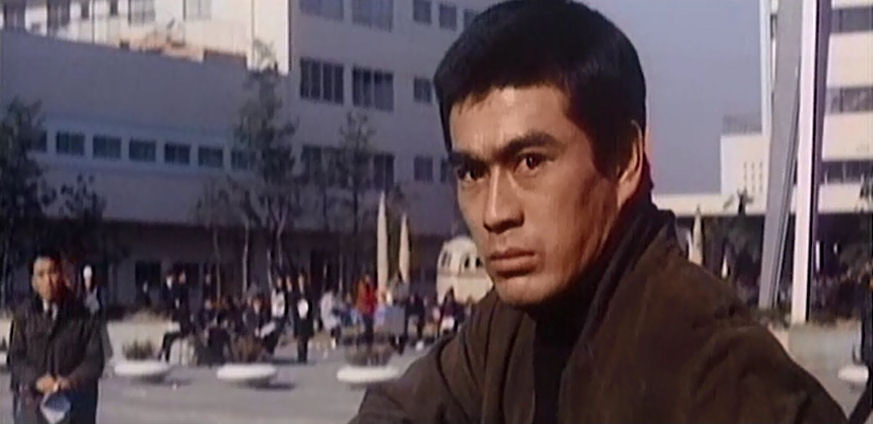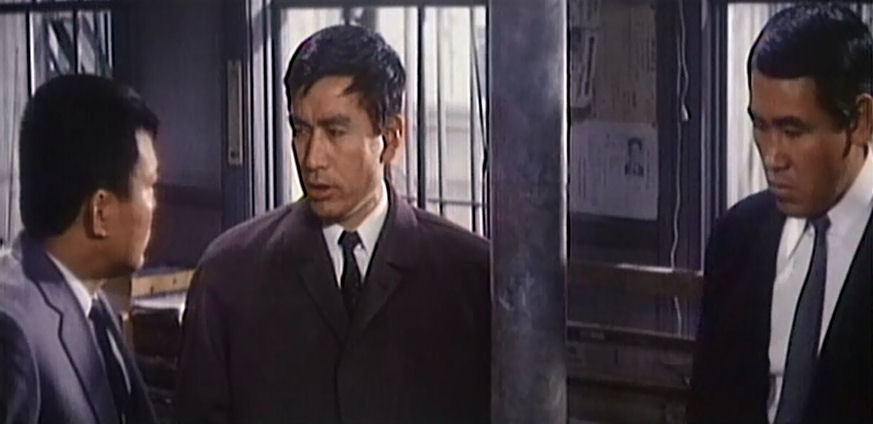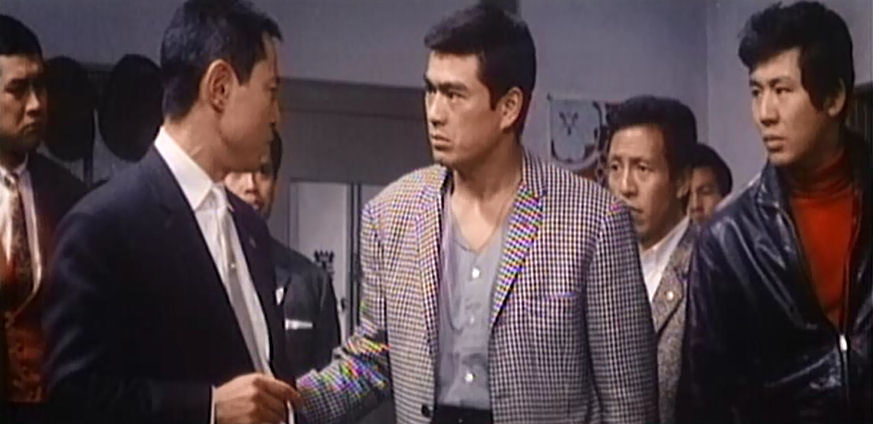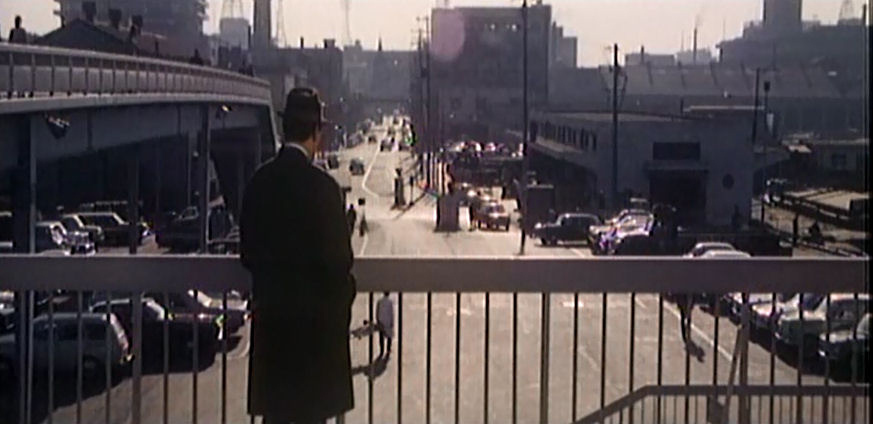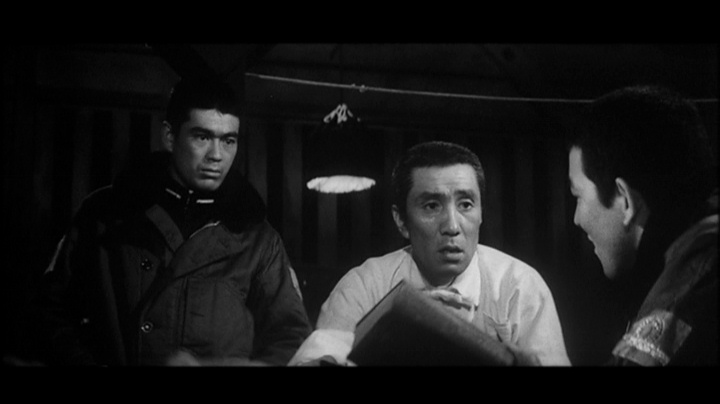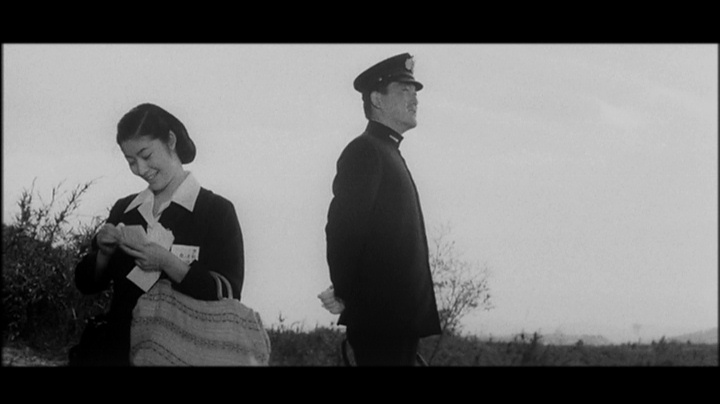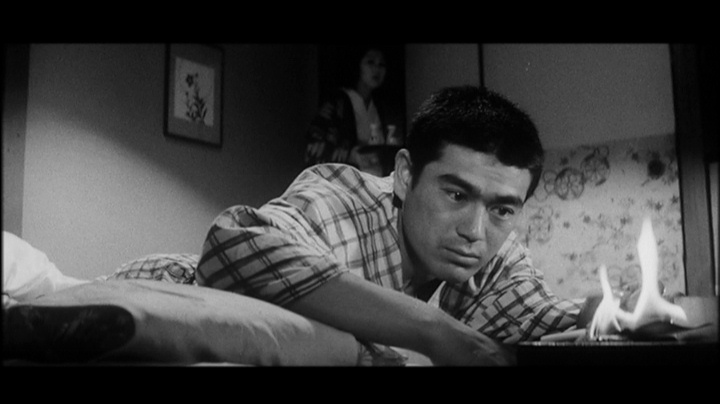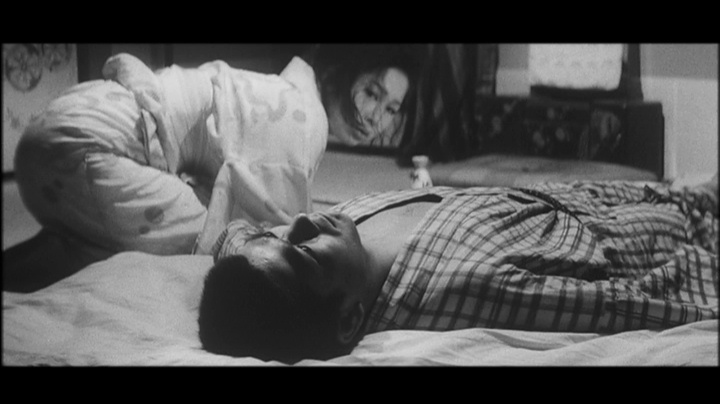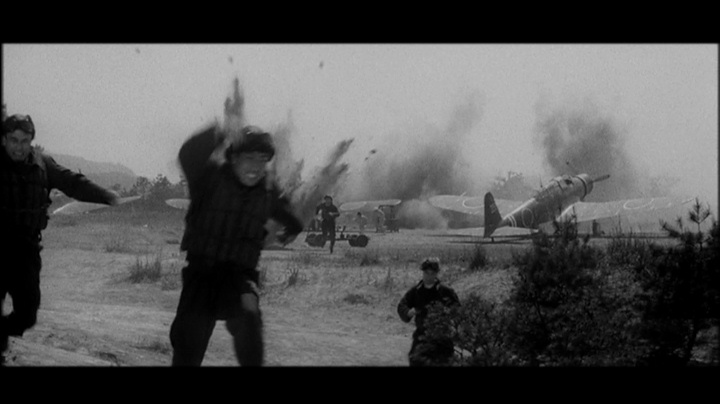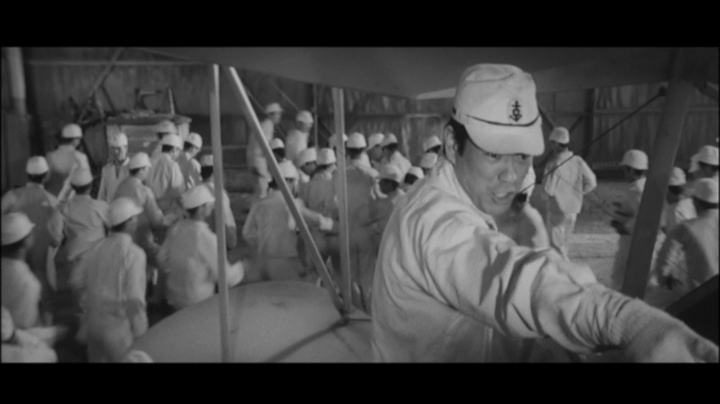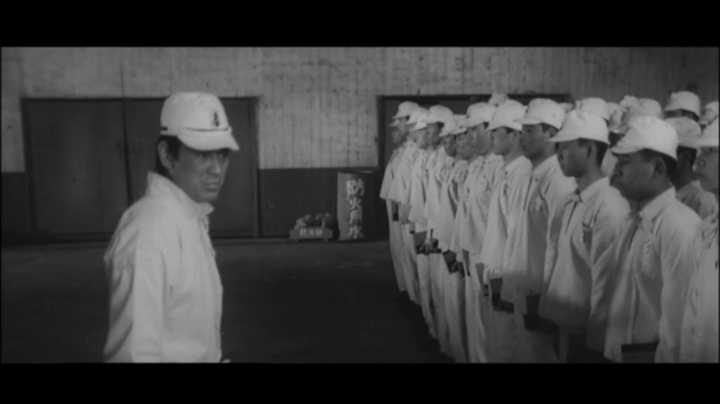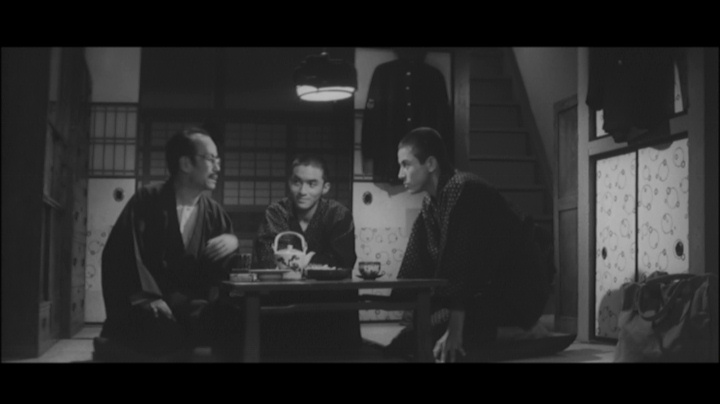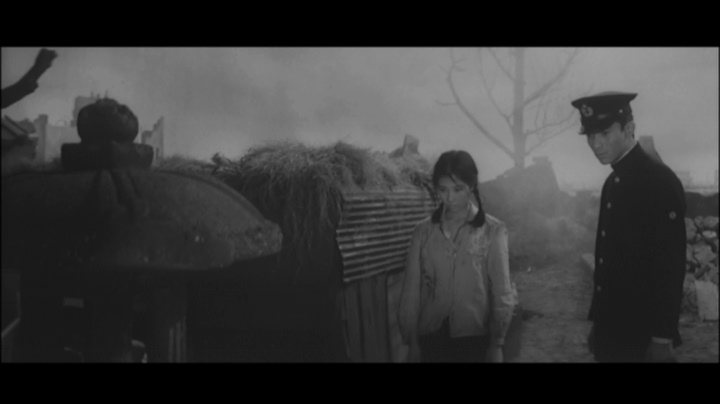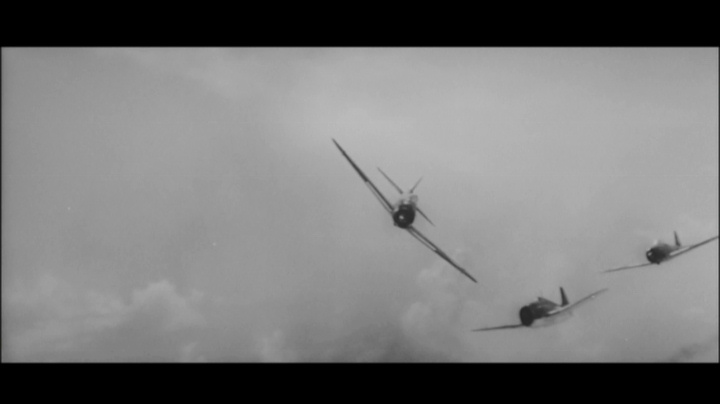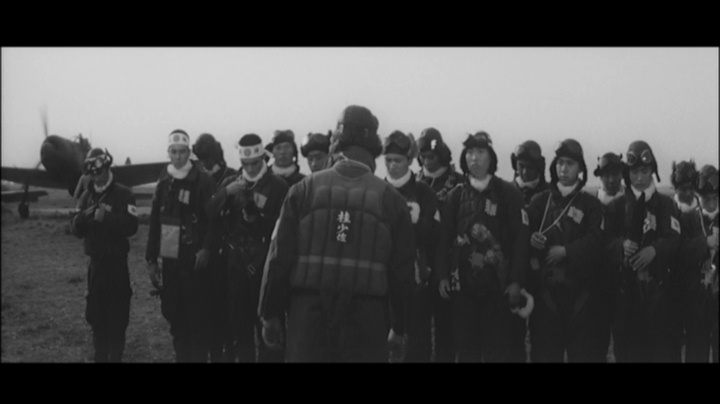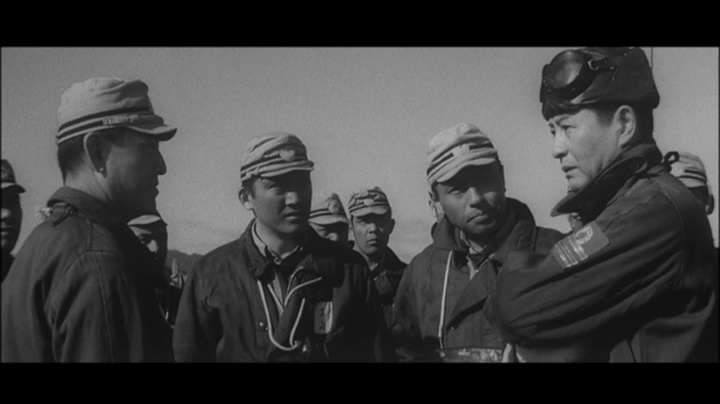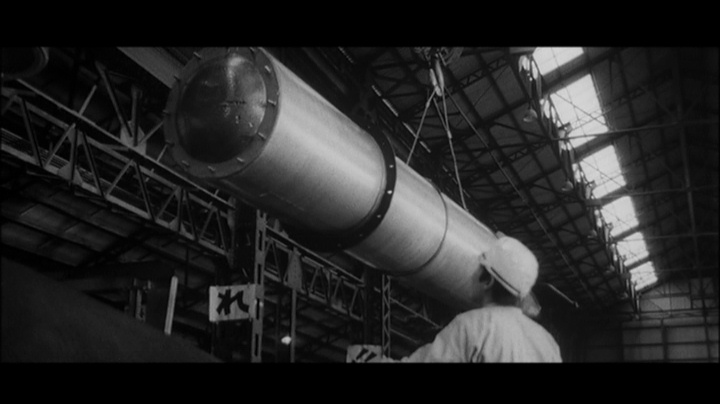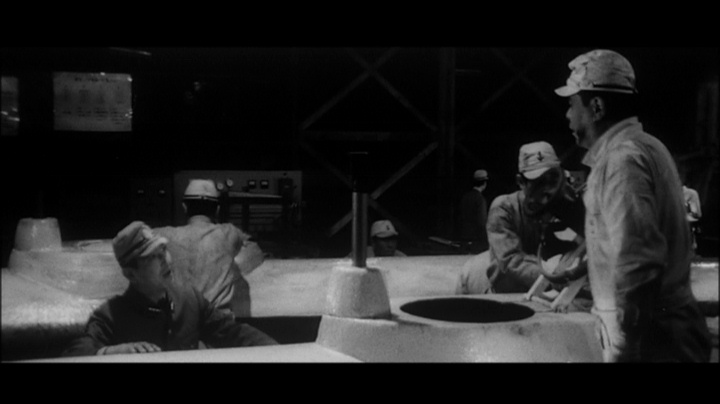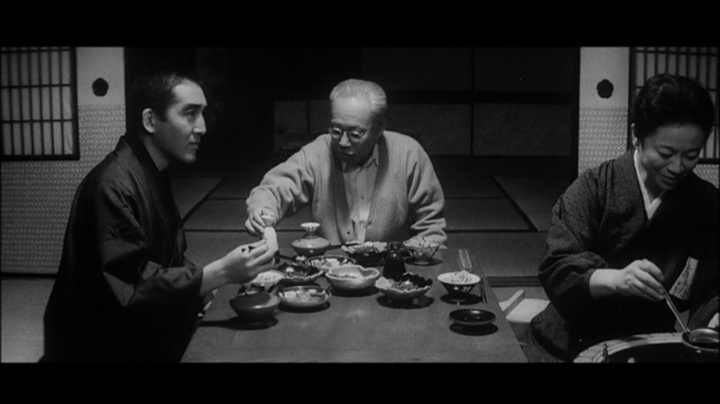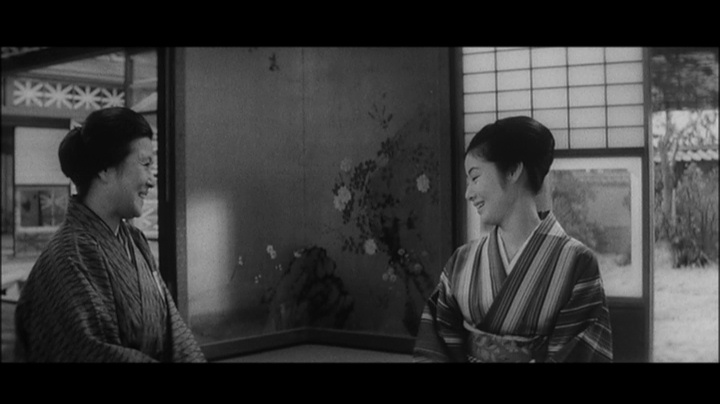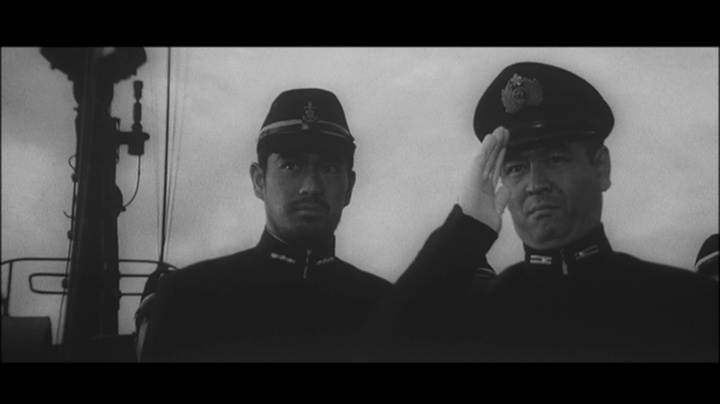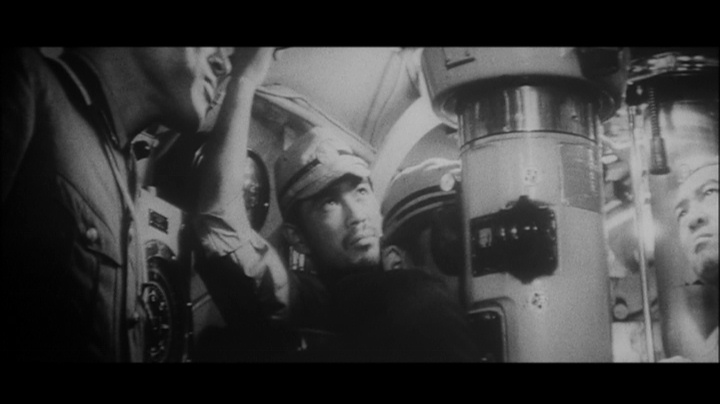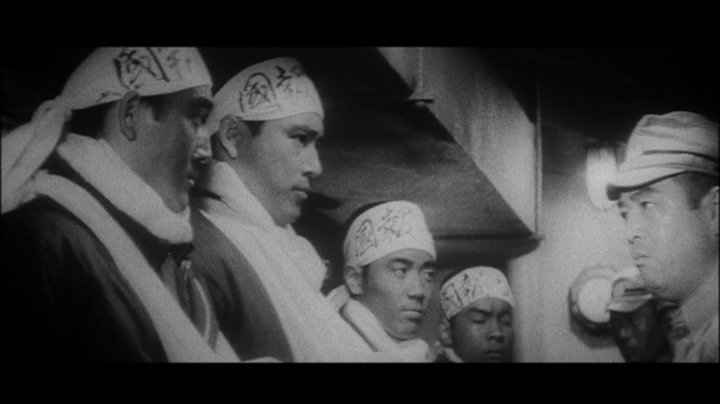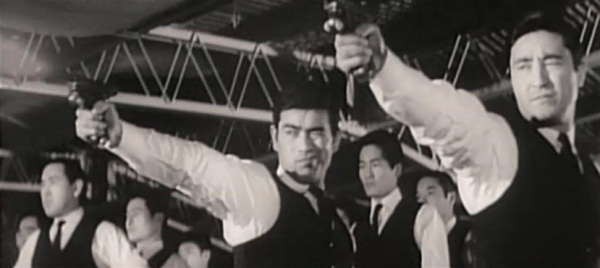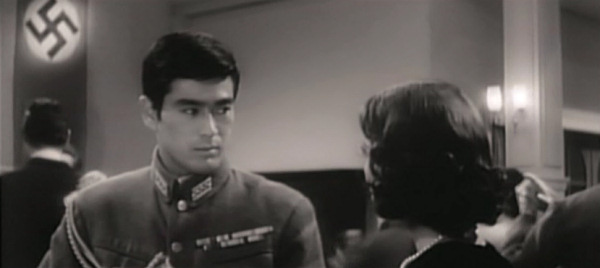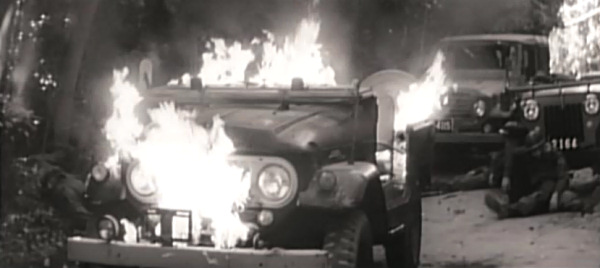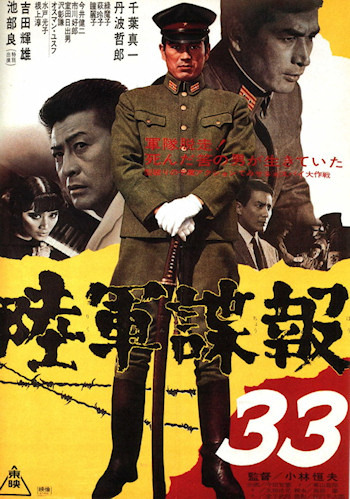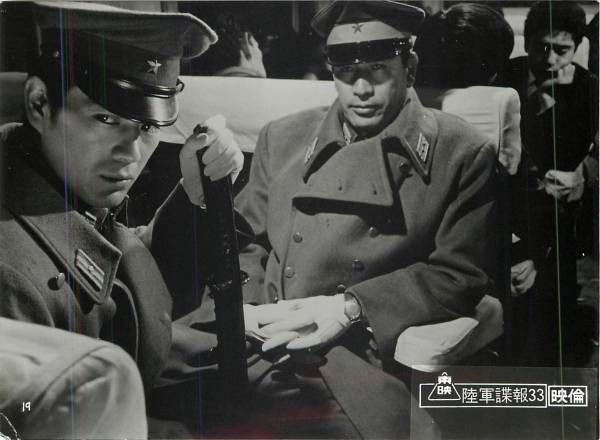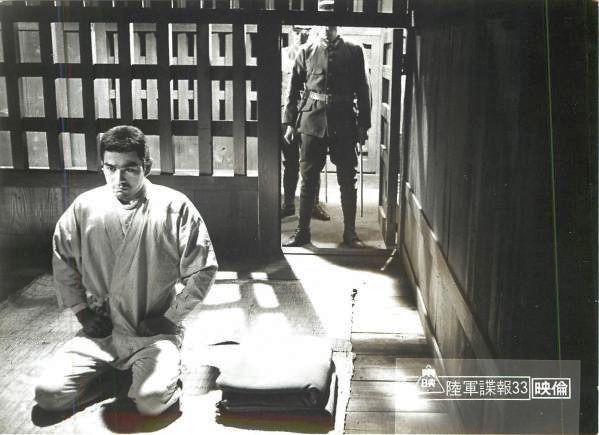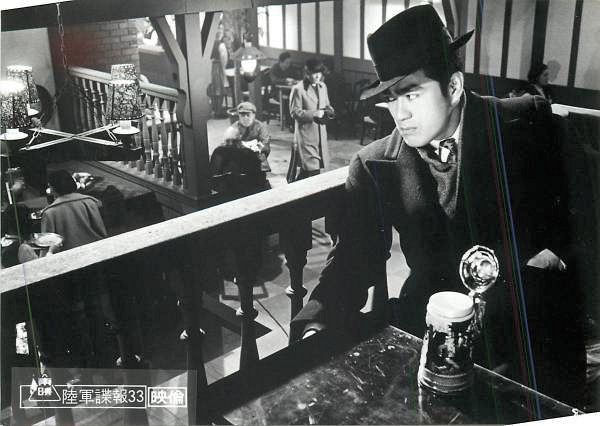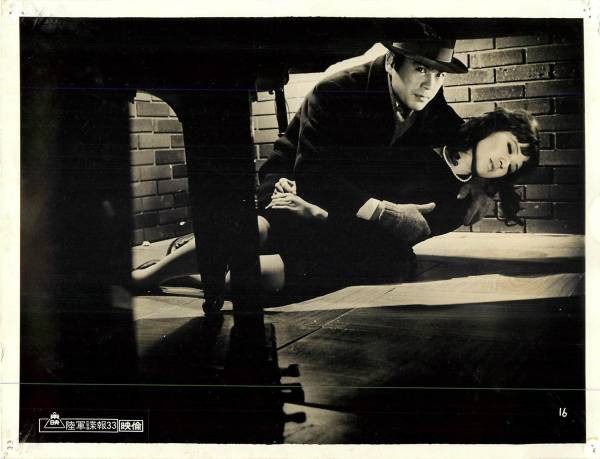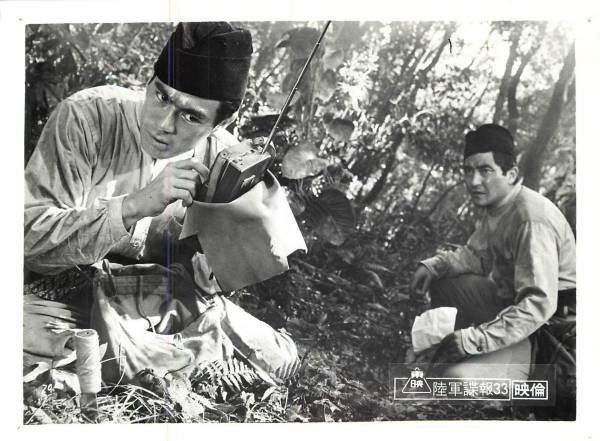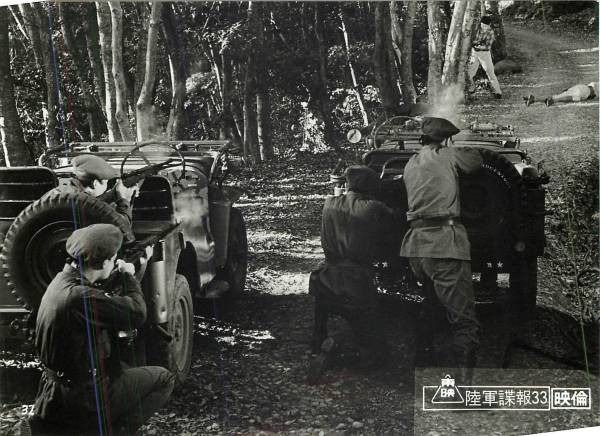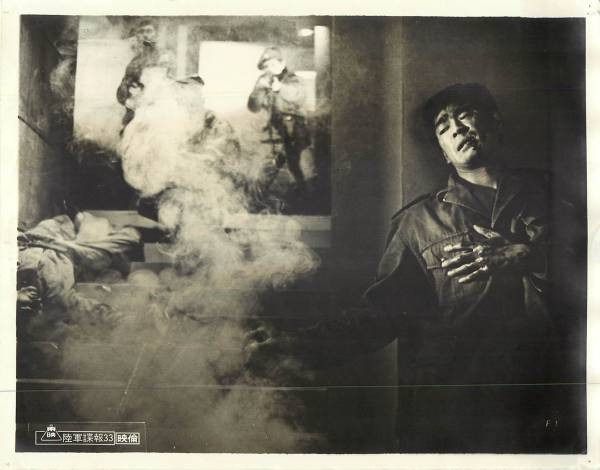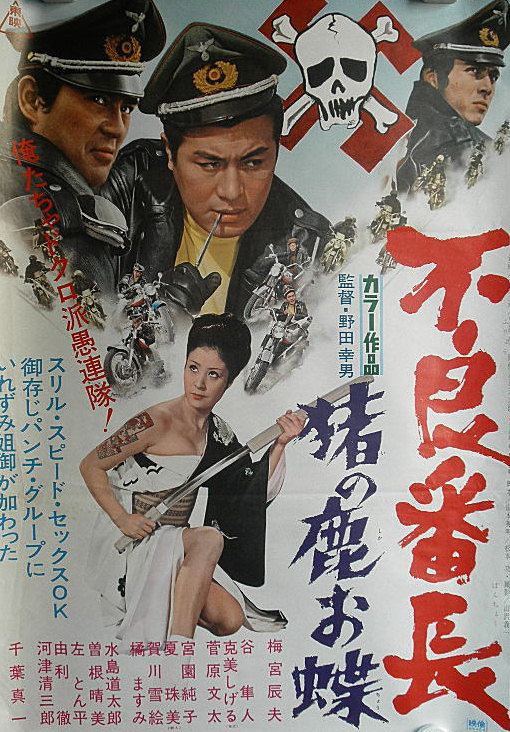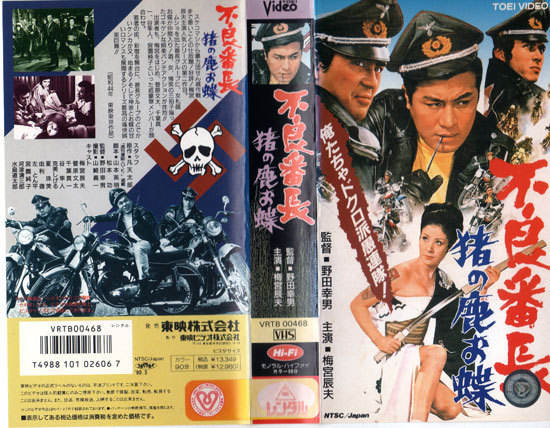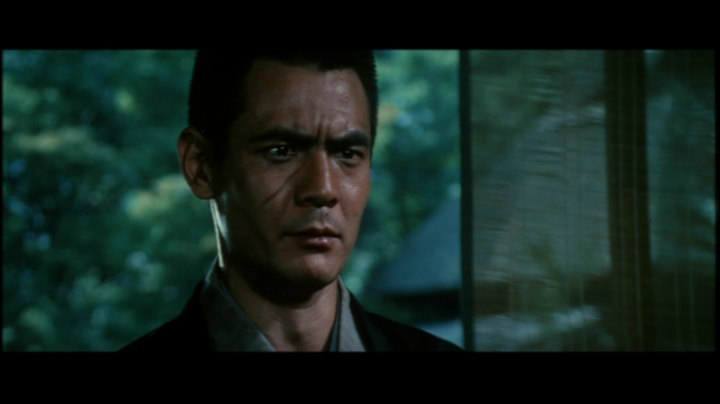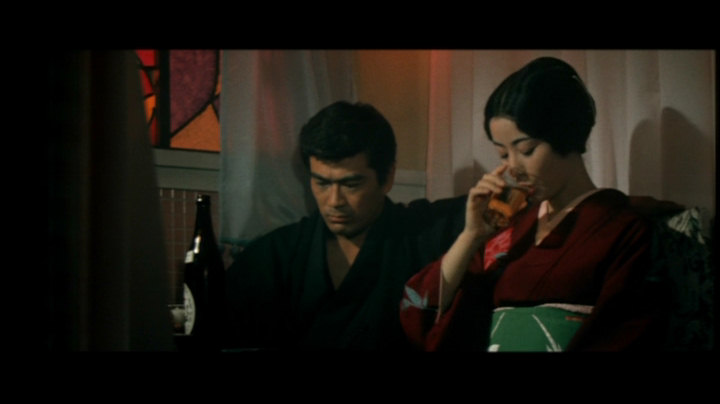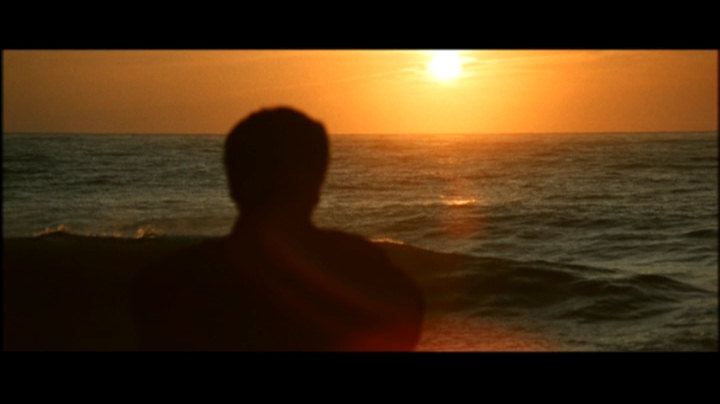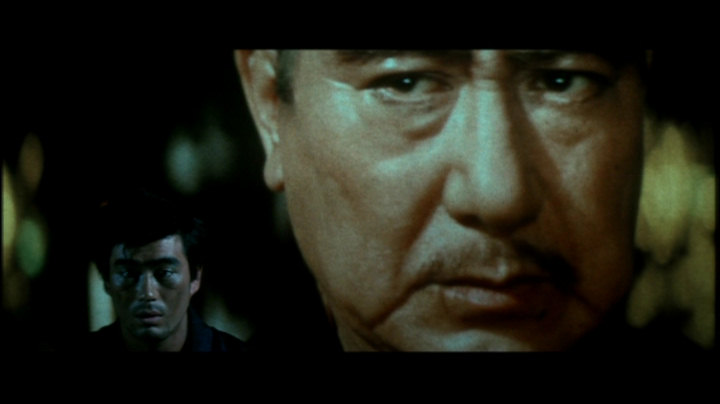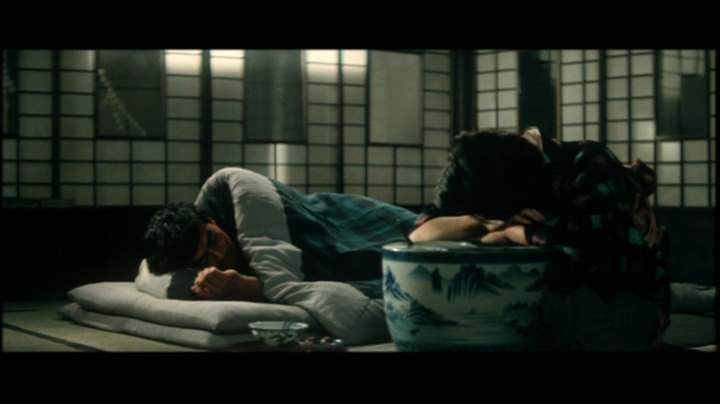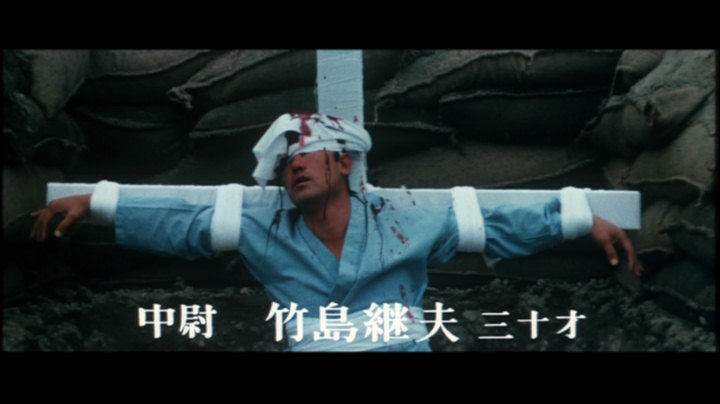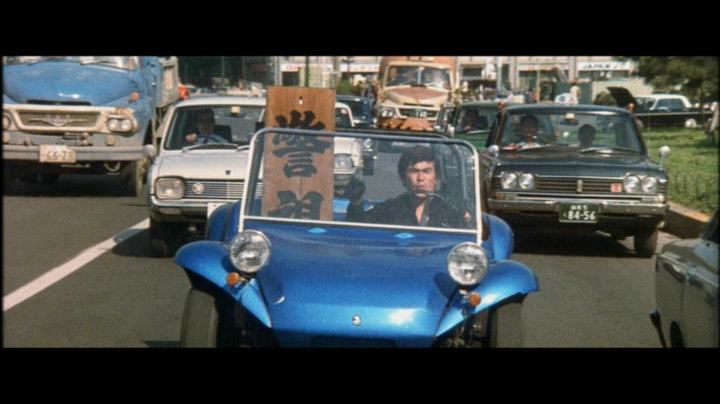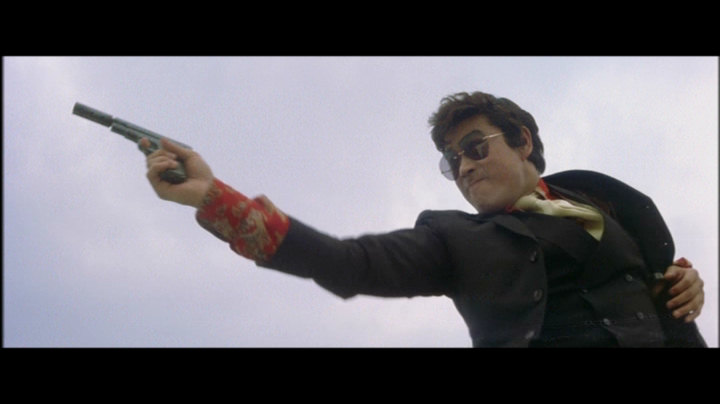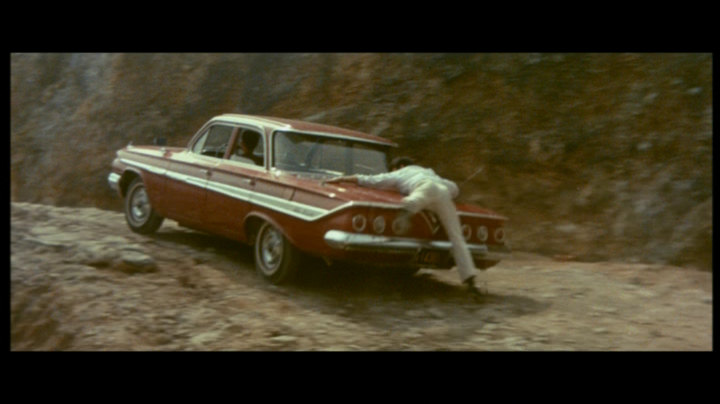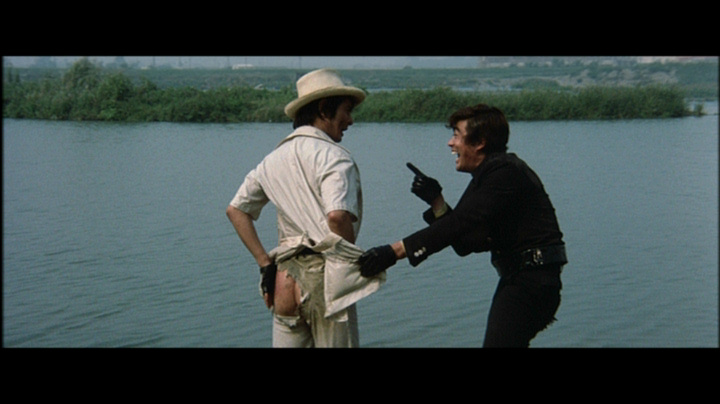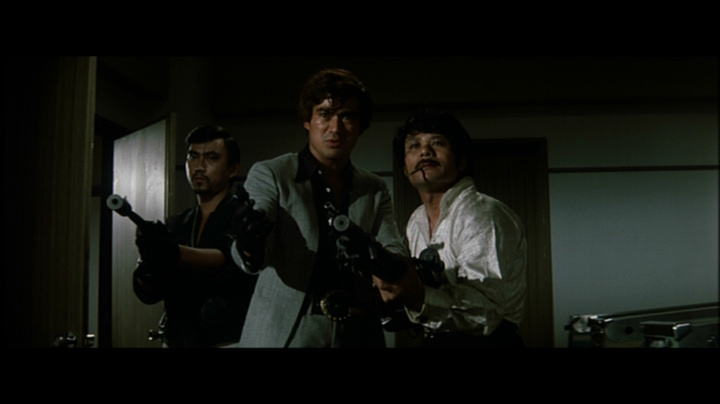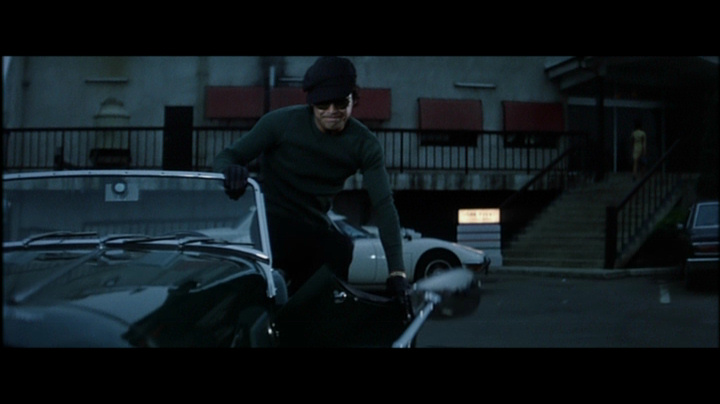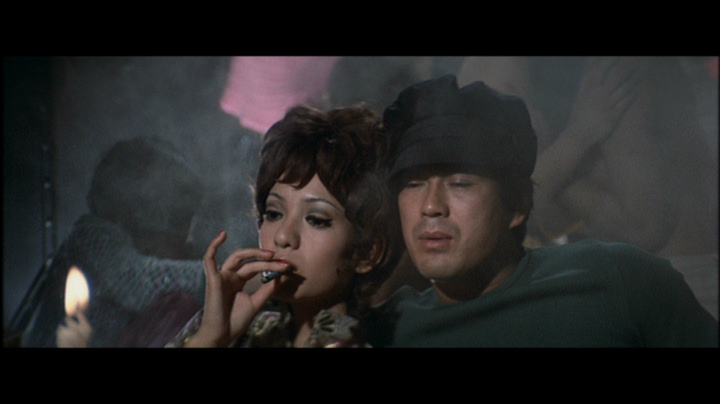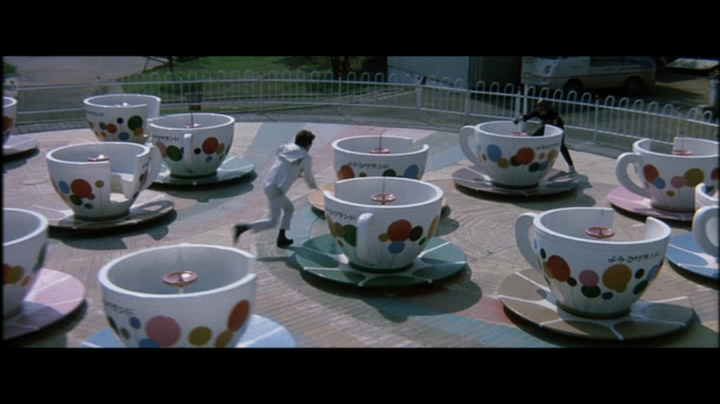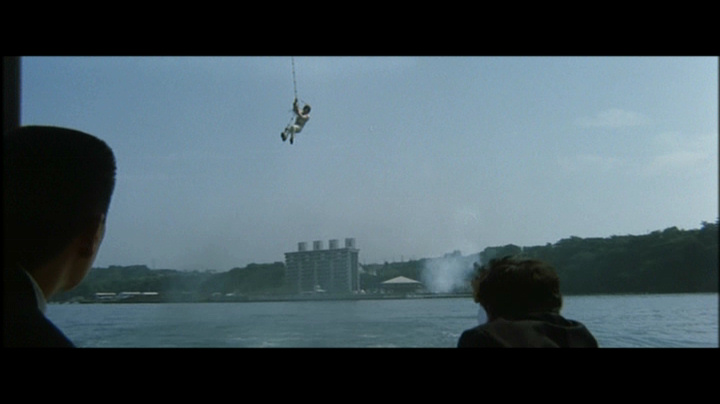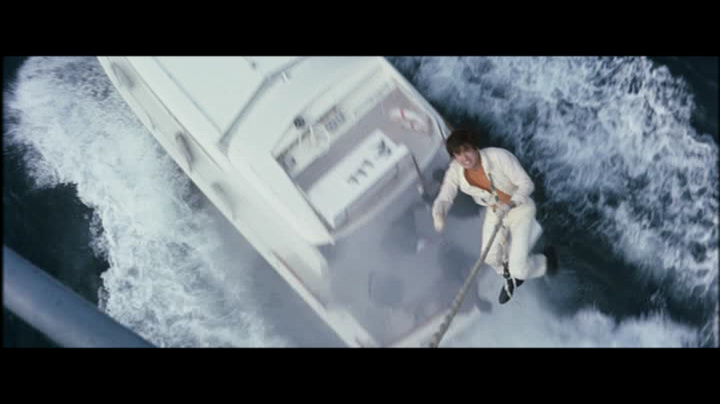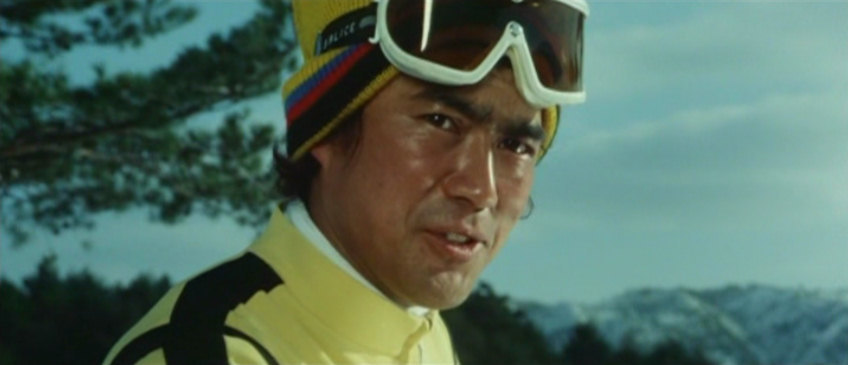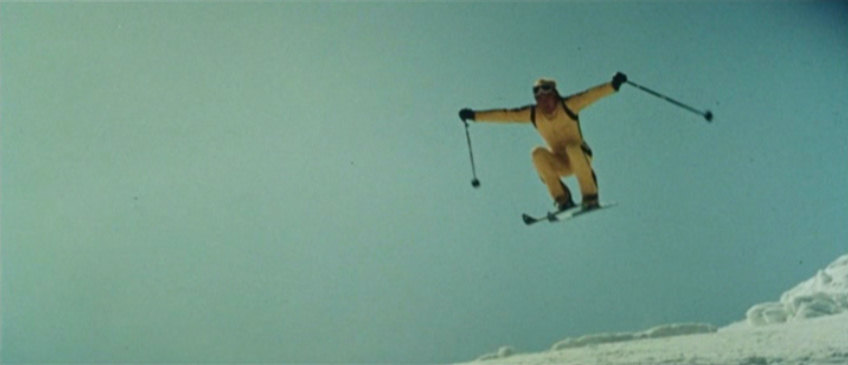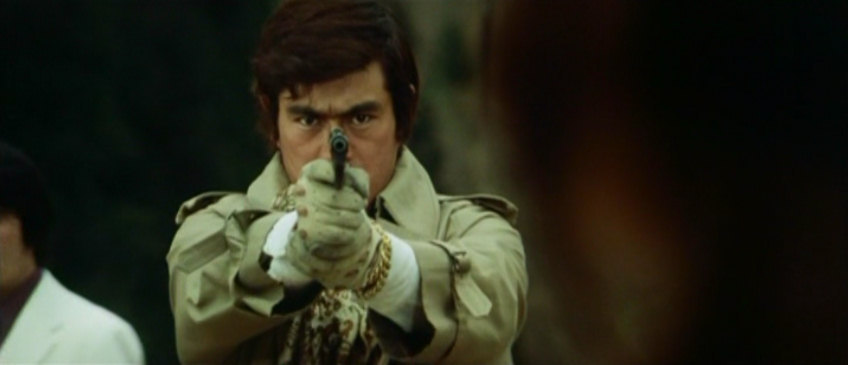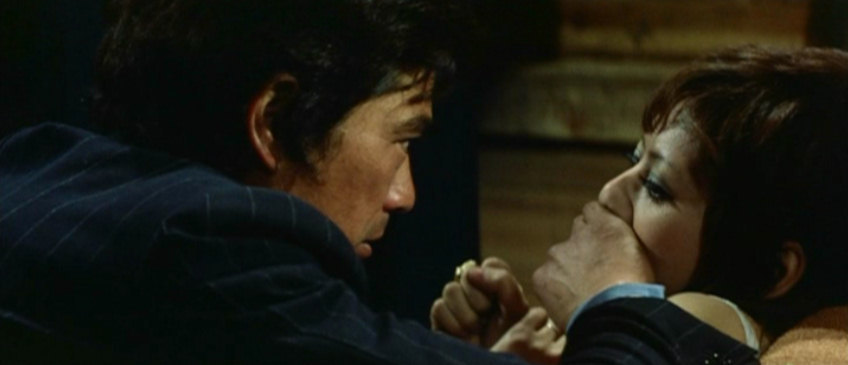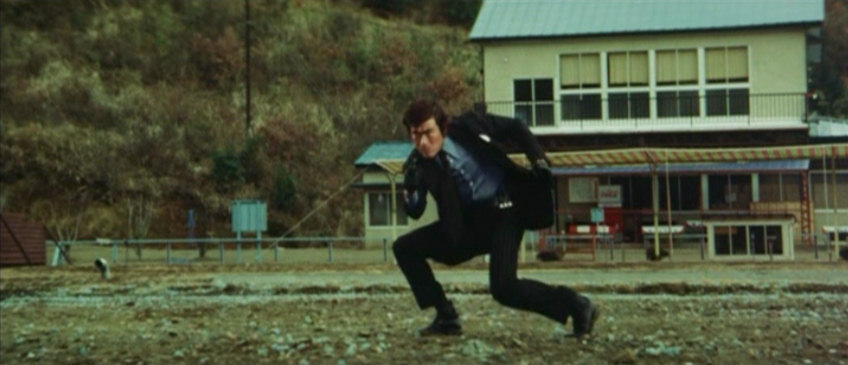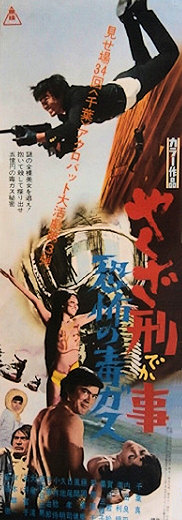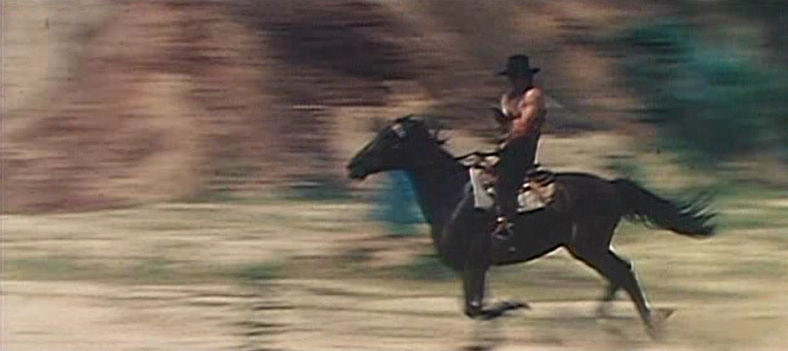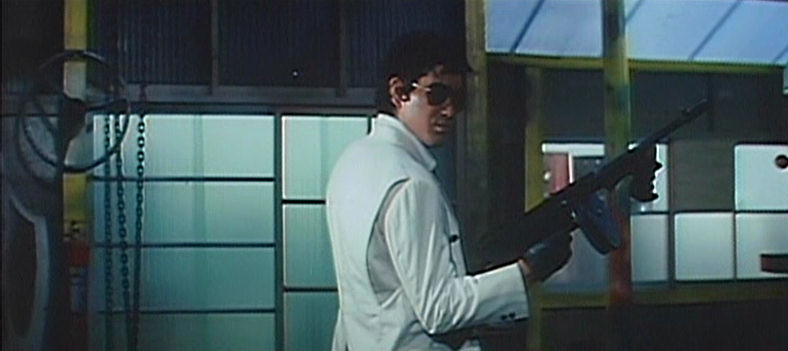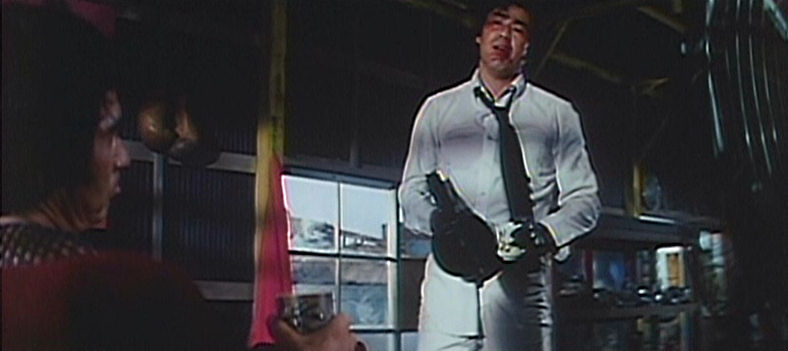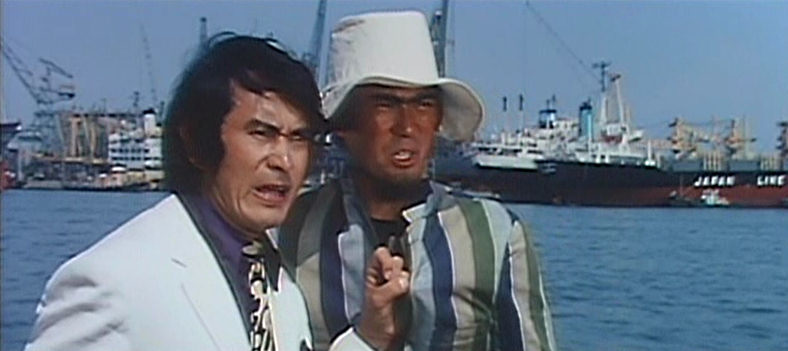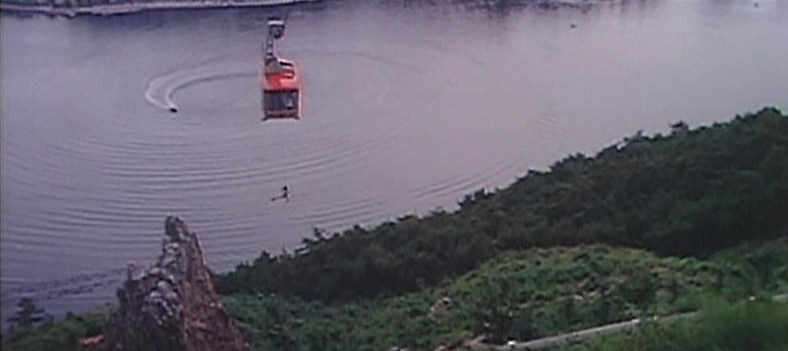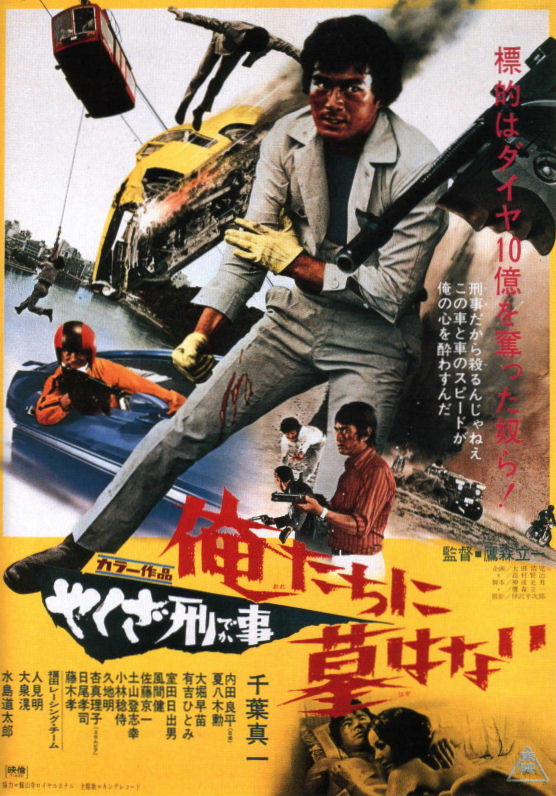Kamikaze Man: Duel at Noon (Japan/Taiwan, 1966) [35mm] – 3/5
Sonny Chiba and Kinji Fukasaku head to Taiwan in this international action thriller influenced by spy films and Hitchcock movies. Chiba is a playboy pilot who is mistaken for someone who he isn't after witnessing a murder in ski centre. The other witness is a Taiwanese lady who is vacationing in Japan. Chiba agrees to fly her back home, but as soon as they land they run into gangsters who are searching for a lost WWII treasure and believe Chiba is the key to finding it.
Kamikaze Man is, first and foremost, an action showcase for Chiba, who designed all the action sequences which contain car chases, boat chases, fist fights, gunplay, and hanging on to a plane that is about to take off. One of the stunts - Chiba trying to hold on to a speeding car - sent him flying through the air and landed him in a Taiwanese hospital. There's a lot of fun to be had, although some of the chases suffer from minor under-cranking. In many ways, Kamikaze Man was a predecessor to Chiba's action work in the television series Key Hunter (1967-1972), which finally made him an Asian action super star and earned him fans like Bruce Lee and Jackie Chan.
The action scenes and foreign locations do pretty good job covering up for the screenplay, which is frankly a bit of a mess. For a film that intentionally plays with its audience, the final revelations are disappointingly simple. A clever storyline is not a necessity for a good action film, but it would be advisable to keep it simple from the beginning to avoid disappointment when there is no reward waiting at the end. It's also obvious this was a "fun project" for Fukasaku, who helms solid action fun doesn't invest too much care or ambition into the film, especially when compared to some of his later work.
As an interesting note, Kamikaze Man was the first time three major Toei stars (Fukasaku, Chiba, and guest star Ken Takakura) worked outside their own studio. Most Japanese filmmakers at the time were studio employees, who would work on any films their studio assigned them to. There was an unwritten rule among the major studios, that they would not try to steal each other's stars, except maybe for a guest appearance. Although (technically speaking) this system came to an end in the early 70s, much of the industry, especially Toei, kept operating much in the same way until around 1977.
Kamikaze Man packed Toei's top talent, but wasn't produced by Toei. It was mainly financed by Ninjin Club, a small independent studio founded by three women in the 1950s to provide actors and filmmakers possibilities to do original films outside of their normal employers. Ninjin Club was able to exist because big studios wouldn't really take notice of such a small independent studio, and the finished products would still be sold to (the filmmakers' native) studios for distribution . The rest of the money came from Taiwan, where most of the filming took place. The majority of the supporting cast were Taiwanese actors, including the female lead. Toei would only distribute after acquiring the completed movie.
Though hardly a great movie, Kamikaze Man is a fun film that travelled quite a bit after its release. Japan and Taiwan aside, it also appears to have been released at least in Germany, Spain and Mexico - sometimes with highly misleading advertising campaigns (in the Spanish language poster Chiba has become a white man... and has a machine gun!). The filmmakers also all headed to international arenas: Fukasaku was involved in Japanese-American co-productions such as The Green Slime (1968) and Tora Tora Tora (1970), Takakura starred in Sidney Pollack's The Yakuza (1974), and Chiba, who had already appeared in an international co-production before (Terror Beneath the Sea, 1966), would soon hook up with Bruce Lee girl Nora Miao in Tokyo-Seoul-Bangkok Drug Triangle (1973).
* Original title: Kamikaze yaro: Mahiru no ketto (カミカゼ野郎 真昼の決斗)
* Director: Kinji Fukasaku
* Chiba's role: Starring role
* Film availability: Toei DVD (Japan) (No subtitles), VoD (Japan) (No subtitles)
Chiba
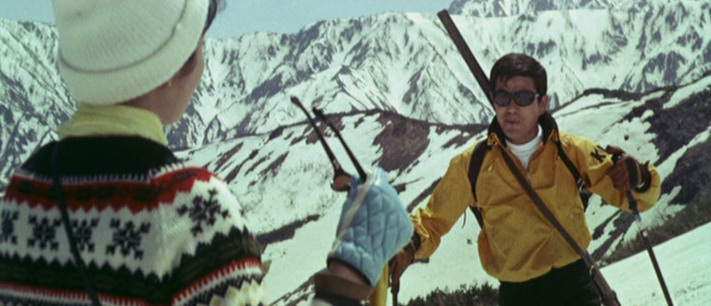

And the girl
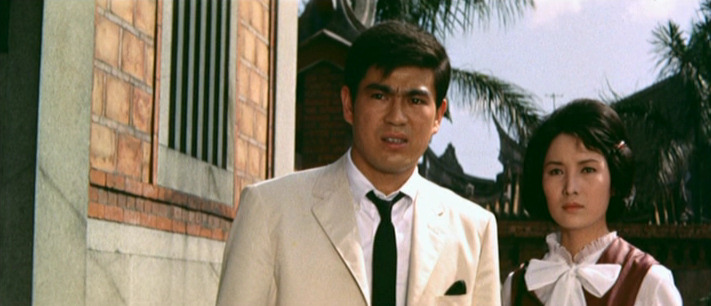
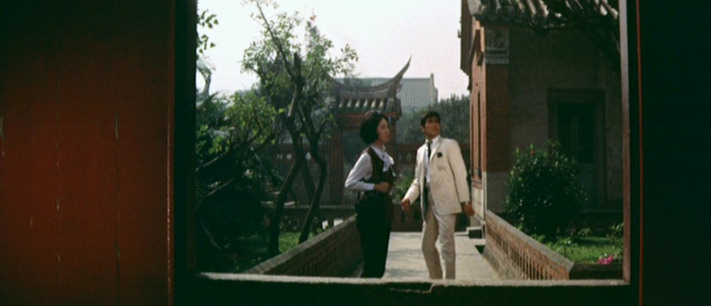
Welcome to Taiwan, Mr. Toilet

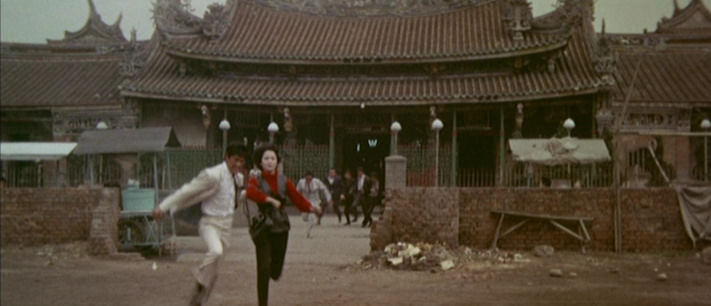
Takakura

Chiba just before earning himself a hospital vacation

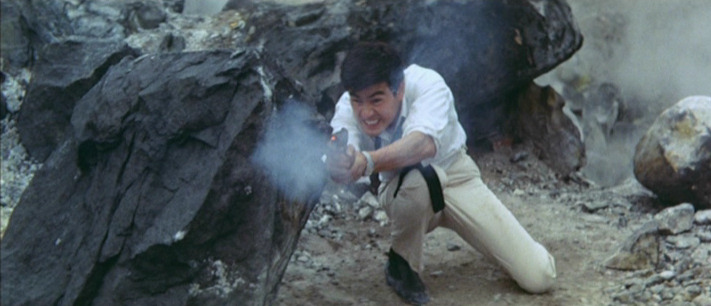
Yep, he's gonna grab to that plane
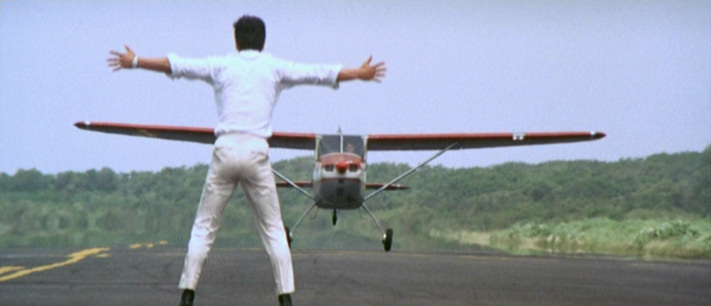 DVD NOTE
DVD NOTE
Toei's DVD release is seriously flawed, I'm afraid. The image keeps turning green throughout the film. Basically, from every three seconds the first two look fine, and for the last one the image is green. It gets a bit less serious towards the end, but remains very distracting. The 35mm print screened at the Chiba festival had no such problem, nor does the old, VHS quality VoD version. When I re-watched the movie at home, I actually turned the DVD off after 10 minutes, and watched the VoD version instead.
